
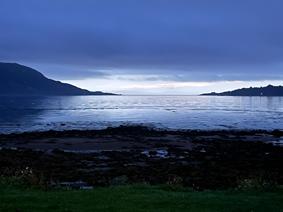













Editor-in-Chief
Daemon Sands
Sub Editor
Foylan Rhodes
Creative Director
Donnie Rust
Designer Louise Smith
Publisher
The Lost Executive Ltd
Sales Department
Carl de Winterz (Director)
Tuck Bradley
Maxine Zurcher
Lost Executive Writers
Cassidy Banks
Foylan Rhodes
Dakota Murphy
Finance
Jerry Lincoln Smith
Company: The Lost Executive Ltd.
Company Director: DAA Campbell Company Number: 11010157
Disclaimer
The Lost Executive and its writers cannot be held responsible for experiences had at any of the businesses featured/mentioned on www.thelostexecutive.com or in The Logbook. Despite how amazing, memorable and enjoyable they may be. Experience is down to the individual. Do your research prior to booking. Assume all posts are sponsored. All images are provided by respected businesses unless otherwise stated. All appropriate accreditation and licensing is upheld.

As November brings a chill to the air and the year’s end nears, The Logbook remains focused on the journeys that matter, both near and far. This month, we take you to one of Scotland’s hidden gems, the Isle of Arran AKA “Scotland in miniature,”. This rugged, yet welcoming isle provides the perfect backdrop for an onsite visit exploring its business landscape, emerging tourism trends, and the challenges local industries and residents face. It’s a reminder that, despite the global disruptions dominating headlines, there are places quietly flourishing with resilience and determination.
Arran is more than just a tourist destination. It’s a thriving hub of local entrepreneurs, where familyrun distilleries, eco-conscious hotels, and outdoor adventure companies offer unique insights into the broader movement towards sustainable business. For those who value a blend of tradition and innovation, Arran delivers. We had the opportunity to sit down with business owners who are leveraging their local heritage to attract a global clientele while staying rooted in environmentally responsible practices. It’s the kind of forward-thinking approach we hope to see more of in 2025.
On a more global scale, however, travel and tourism continue to face significant challenges. The geopolitical climate, shaped by ongoing tensions in Gaza, Ukraine, and other regions, remains volatile. These conflicts have a ripple effect on the travel industry, creating uncertainty for both leisure and corporate travellers and while the rise in oil prices and disruptions in international airspace are just some of the practical issues, the human toll cannot be overlooked. Safety, security, and ethics are now paramount in travel decisions, and The Logbook remains committed to keeping you informed as the landscape evolves.
One of the most intriguing topics we’ve delved into this month is the rise of medical tourism.

This niche sector is booming as individuals seek affordable, high-quality healthcare abroad. But it’s not just about saving money. Many travellers are combining medical treatments with luxury recovery experiences, turning what might be a stressful medical ordeal into a curated wellness retreat. The Isle of Arran, for instance, may not be a medical tourism hotspot, but it has the potential for therapeutic wellness tourism, with its tranquil scenery, fresh air, and health-conscious offerings.
Medical tourism has shifted from being primarily focused on elective surgeries to becoming a more diversified industry. With countries like India, Turkey, and Costa Rica offering everything from dental treatments to complex surgeries at a fraction of the cost in Western nations, businesses in this sector are rapidly innovating to cater to a global clientele. The demand for comprehensive medical and wellness packages continues to grow, and the integration of telemedicine services has only accelerated this trend. In 2025, we expect to see even more collaboration between health and travel industries to meet the evolving needs of medical tourists.
Of course, no November issue would be complete without a look at the automotive world, and this month’s car review is something to get excited about. We had the pleasure of putting the Mercedes-Benz EQS through its paces, and let me tell you, it’s a ride that redefines the concept of luxury in electric vehicles. The smooth, silent power of the EQS coupled with its cutting-edge technology is enough to make you reconsider the notion of what a car should be. The in-car AI, enhanced with the MBUX hyper screen, offers a driving experience so intuitive it’s hard to remember what life was like before. And with a range that comfortably exceeds 400 miles, this is the kind of innovation that heralds the future of sustainable travel without compromise.
Still, amidst all the excitement over innovation and new frontiers, we must also address the travel concerns that are likely to continue into the coming year. The ongoing conflicts in Ukraine and Gaza have cast long shadows over international travel. With flight paths restricted, travel insurance premiums rising, and safety protocols under constant review, businesses and leisure travellers alike are reconsidering their options. Will we see a more cautious approach to international travel in 2025? Or will travellers, fuelled by pent-up demand after years of pandemic restrictions, push ahead regardless? Only time will tell.
It is ever more obvious that we cannot ignore the environmental impact of global travel. 2025 will bring even more scrutiny to the sustainability practices of airlines, hotels, and tour operators. Travellers are becoming more discerning, not only seeking out eco-friendly accommodations but also expecting transparency in the carbon footprints of their trips. The challenge will be balancing the human need for exploration with the responsibility of minimizing harm to our planet, a theme we’ll be watching closely in the months ahead.
Looking forward to 2025, I can’t help but feel that the year ahead holds both immense challenges and exciting opportunities. The world is in a state of flux, but out of this uncertainty comes the potential for transformation. So, as you sip your morning coffee, flipping through the pages of this issue, take a moment to imagine where you’ll be this time next year. With the right mindset and a little foresight, 2025 could very well be the year we embrace not just new destinations but new ways of thinking about travel, business, and the world at large.
Sincerely,
Donnie Rust Creative Director and Editorial The Logbook

Have you seen last month’s issue?


Travel experts from London Tickets & Tours are cautioning travelers in busy UK cities to stay alert against common scams. Magdalena Petrusic, a travel expert with the company, advises avoiding public Wi-Fi in locations like train stations, as unencrypted networks can expose personal information to hackers.
For safer browsing, she recommends using mobile data or a VPN. Among the common scams, fake Wi-Fi networks are particularly risky, especially in tourist areas. Travelers should also be aware of fake train ticket inspectors who demand on-the-spot fines for supposedly invalid tickets and overpriced taxis that inflate fares for unfamiliar passengers.
Petrusic suggests using licensed taxis or trusted apps to avoid issues. Additionally, fake booking sites are on the rise, so it’s wise to book only through official platforms like Trainline or Booking.com. Finally, she warns of card skimming at ticket machines, advising travelers to check for signs of tampering and consider using contactless payments or mobile apps to purchase tickets safely.

As this holiday travel season ramps up, a recent survey by Matador Network reveals that 30% of travelers plan to use AI to assist in their travel planning. Among those already familiar with AI travel tools, two-thirds are set to leverage them for holiday arrangements this year, with Millennials and Gen Z travelers leading the charge—almost 50% more likely than their older counterparts to rely on AI.
“I used AI last Christmas while in Split, Croatia. It led me to Diocletian Palace and Marjan Park, which was beautifully decorated for the holidays,” shares Daryl H., an American based in Slovakia.
“Without the suggestion from the AI, I might not have visited Marjan Park. I’ll be using AI to find holiday travel inspiration in Europe again this year.”
Matador Network’s CEO, Ross Borden, highlights AI’s versatility in managing diverse family needs, particularly with their GuideGeek tool: “Generative AI is really well suited to finding activities for a diverse group of people with different interests. You can ask GuideGeek specific questions like, ‘We have a 94-yearold who uses a wheelchair and a 15-year-old vegetarian in our group. What are some good options for dinner in Chicago?’”
GuideGeek is accessible for free on WhatsApp, Instagram, and Facebook Messenger, offering tailored recommendations for destinations like Greece, Aruba, Toronto, and Reno-Tahoe.
Christine Frances from Atlanta, who used AI to plan her post-holiday trip to Vancouver, shares her experience: “AI has made my travel planning a little easier because not only does it give me great suggestions but also includes information on hidden gems in the destination I am visiting.” Her favorite recommendation? A serene waterfall hike in Lynn Canyon Park, far from the crowds.
With holiday travel surging, AI’s role in personalized, adaptable trip planning appears set to redefine how we explore.

Del Monte Foods was awarded the 2024 Corporate Hero Award by the Alliance for a Healthier Generation at the America’s Healthiest Schools Leaders Summit in Arkansas. Recognized for its “Nourishing Families by Nourishing Schools” initiative, Del Monte has impacted over 7.6 million students and families, surpassing its 2022 goal. This $5 million, ten-year commitment aims to enhance nutrition
education and food access, addressing food insecurity’s impact on student well-being and performance.
Greg Longstreet, Del Monte’s CEO, emphasized the company’s dedication to a healthier future, while Kathy Higgins, CEO of the Alliance for a Healthier Generation, praised Del Monte for motivating schools to improve child health. At the event, Del Monte highlighted its work to increase nutrition access, with 360 schools honored for their efforts to enrich meal programs. Del Monte’s mission, Growers of Good®, aligns with these goals, supporting accessible nutrition for children across the nation.

This November, Fireball is launching a limited-edition whisky called “Crierball,” infused with the “tears of losing teams” to capture the intense spirit of football rivalries. With its cinnamon-sweet flavor, Crierball is aimed at fans who relish in the triumph of rivalry games. According to Danny Suich, Fireball’s Global Brand Director, the new release celebrates the joy of victory and the heartache of defeat, transforming tears into a whisky that will offer bragging rights for winners.
Fireball’s “Tear Collectors” will be stationed outside major rivalry games across the U.S., asking emotional, defeated fans to donate their tears for the whisky. Rivalries include matchups like Florida vs. Georgia, Eagles vs. Cowboys, and Michigan vs. Ohio State. These collected tears will undergo a months-long process of sterilization and distillation,
ready to be bottled by next season. Fans can follow Fireball on social media for updates on collection sites and game-day activations. This unique launch ties into Fireball’s latest “Ignite Your Rivalry” ad campaign, featuring comedians Stavros Halkias and Andrew Santino, celebrating the highs and lows of football fandom with Fireball’s iconic edge.

Capella Hotels and Resorts recently announced its upcoming property, Capella at Galaxy Macau, set to open in 2025 in partnership with Galaxy Entertainment Group. This luxury development is described as an “art-filled sanctuary” aimed at providing a serene escape within Macau’s dynamic setting. With 93 rooms, Capella at Galaxy Macau aims to blend beauty and tranquility, designed to offer guests an immersive, refined experience.
The new property aligns with Capella’s mission to bring “exceptional hospitality” to iconic locations. Nicholas Clayton, CEO of Capella Hotel Group, stated, “Capella at Galaxy Macau will redefine luxury in Macau, combining the city’s unique energy with our renowned commitment to creating intimate and unforgettable guest experiences.” This expansion is part of Capella’s broader strategy to establish itself in key global destinations, creating properties that reflect local culture while maintaining their luxury ethos.

Onus IV Therapy + Longevity, a pioneering franchise in the longevity wellness space, announced its plan to expand to 500 locations across the U.S. over the next decade through a partnership with Fransmart, a global franchise development leader. With six locations and a seventh opening soon, Onus combines medically-backed, personalized health services like IV therapy, hormone replacement, and lab testing in a comfortable, spa-like environment designed to encourage proactive health.
Founded by Dr. Ben Wilks, Kristy Anderson, and Chaz Faulhaber, Onus started in 2015 as a wellness solution for Colorado athletes. Since then, it has served over 60,000 clients, evolving into a holistic, evidence-based model that promotes vitality. “Onus is all about taking responsibility for your health and making that first choice toward a healthier life,” explains Faulhaber, emphasizing their commitment to a personalized and approachable wellness experience. This approach, combined with a robust membership program, positions Onus uniquely within the $1.8 trillion U.S. wellness industry.
Kristy Anderson highlights the gap Onus fills between clinical and spa settings, making wellness more accessible while delivering impactful results. CEO Dan Rowe of Fransmart commends Onus’s streamlined model and high margins, underscoring their aim to engage franchisees with a passion for proactive health.
Franchisees will benefit from Onus’s business model, which includes training, marketing, and support, aiming to make longevity-focused care accessible nationwide.

Ever been on a Night Safari? Now could be your chance


By Cassidy Banks
Andy Byford is often hailed as one of the most transformative figures in public transportation and has left an indelible mark on rail travel in both New York City and London. Spanning decades across multiple global cities, his career is marked by a unique combination of technical expertise, handson management, and an unyielding commitment to customer service. His success in revolutionizing rail travel didn’t come easily and required significant effort, bold leadership, and the ability to navigate complex bureaucracies. Nevertheless, his leadership approach is defined by transparency, a focus on modernization, and a clear vision of what rail travel can be in the 21st century. The Lost Executive explores.
Looking back, before his pivotal roles in New York and London, Byford worked in various transport capacities, including in Sydney, Australia, and Toronto, Canada. However, his rise to prominence began in the United Kingdom, where he worked for London Underground, one of the world’s oldest, busiest and most iconic metro systems. It was here that his early experiences helped him develop a deep understanding of the intricacies of running large, complex urban transit networks and all that entails.
However, it was his time as CEO of the Toronto Transit Commission (TTC) from 2012 to 2017 that put him on the map as a major figure in public transportation. During his tenure, Byford led ambitious modernization efforts aimed at upgrading the city’s aging transit infrastructure.
“It is about improving reliability, providing new services, and making the system one that Toronto can be proud of,” Byford said about his work in Toronto.
Possibly Byford’s most high-profile challenge came
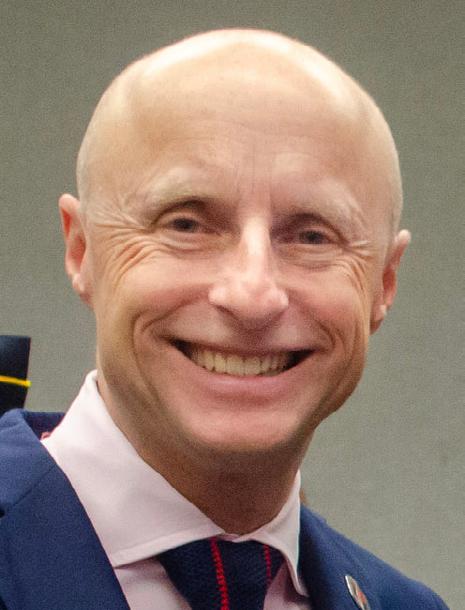
when he was appointed President of the New York City Transit Authority (NYCTA) in 2018. At the time, New York’s subway system was in a state of crisis, plagued by frequent delays, outdated signaling systems, underinvestment and an ardently unforgiving media. Arriving with a clear sense of purpose, Byford set out to overhaul a century-old system that had fallen behind the times.
His signature initiative was the “Fast Forward” plan, an ambitious blueprint for modernizing the subway, which focused on speeding up the replacement of the subway’s ancient signalling system, much of which had been in place since the 1930s. Byford reveals that his experience told him that upgrading signals was the key to improving service reliability.
“It’s about getting the basics right,” he elaborates, “That means

delivering a reliable service, modernizing the system, and treating customers with the respect they deserve.”
The plan also aimed to make more stations accessible to people with disabilities, improve bus services, and address chronic delays. Byford’s approach to leading this transformation was rooted in transparency and communication. He was often seen walking through stations, interacting with riders, and visiting workers on the ground. This accessibility made him a rare figure in public transportation management, a leader who was both accountable and relatable.
Byford’s emphasis on collaboration also played a key role in his success. He built strong relationships with labor unions, contractors, and government officials, ensuring that everyone was aligned toward the common goal of improving service.
His ability to bring together various stakeholders was one of his strongest assets and he noted

in a public address at the time, “We must work together, and I believe that’s what we are doing. We are united in a common cause to fix this system.”
However, Byford’s tenure in New York was not without challenges. The political landscape in the city, particularly the complexities of working with Governor Andrew Cuomo, created friction that eventually led to Byford’s resignation in early 2020. Despite the difficulties, Byford’s contributions left a lasting impact on the subway system.
His “Fast Forward” plan laid the groundwork for future improvements, including a commitment to continuing signal upgrades and station renovations. Even after his departure, Byford’s influence continued to shape the direction of the New York City transit system.
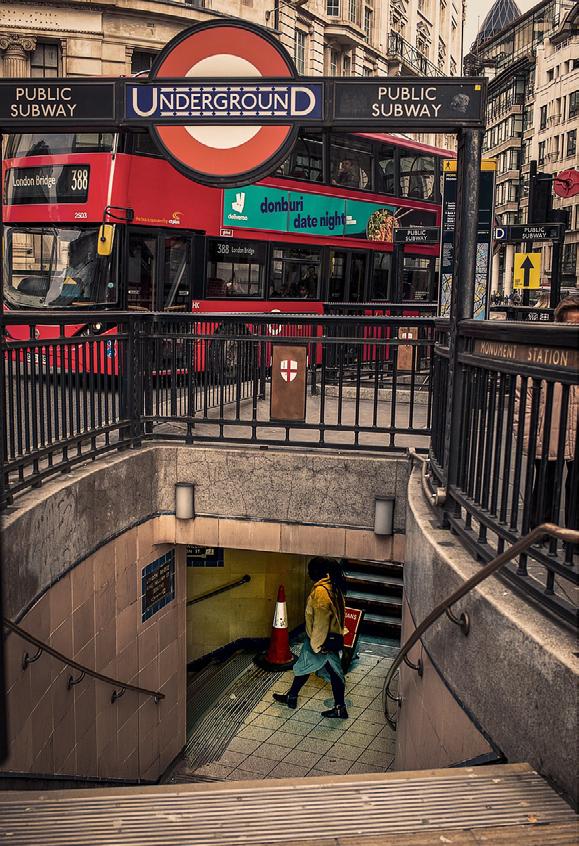
Reflecting on his time in New York, Byford said, “We stabilized the system and improved customer satisfaction in the short term while laying the foundation for longer-term improvements.” His tenure was widely considered a success, particularly given the scale and complexity of the NYCTA. His emphasis on both immediate fixes and long-term planning is a testament to his strategic vision and commitment to delivering tangible results for riders.
After leaving New York, Byford returned to his home city of London in 2020 to take up the role of Commissioner of Transport for London (TfL) His tenure there was equally significant, as he led the city’s transportation system through the COVID-19 pandemic, ensuring essential services continued to operate despite the challenges posed by lockdowns and financial strain on TfL.
Perhaps Byford’s most notable achievement in London was the completion and launch of the Elizabeth Line, a £19 billion Crossrail project that had faced delays for years. Here his leadership was instrumental in getting the project back on track and delivering the long-awaited rail service, which opened in May 2022. The Elizabeth Line now connects key areas of London with faster travel times and increased capacity, transforming the way residents and visitors navigate the city. Byford described the project as “a once-in-a-lifetime opportunity to revolutionize travel in London and beyond.”
The Elizabeth Line’s opening was a crowning achievement for Byford that cemented his reputation as a transformative leader in the rail industry.
“We worked tirelessly to ensure that this line would open, and it’s a proud moment for everyone involved,” Byford says, “The line has already become a vital part of London’s transportation network, easing congestion on other lines and providing more efficient connections to major hubs like Heathrow Airport.”


Andy Byford’s leadership style is characterized by his hands-on approach and his focus on accountability and transparency. He is known for being highly visible walking the platforms, talking to staff, and experiencing the system as a customer would. This approach not only helps him identify problems firsthand but also builds trust among workers and riders alike.
“You have to be out there, see the issues for yourself, and understand what both staff and passengers are going through,” he says.
Byford also believes in setting clear, achievable goals. His plans, such as New York’s “Fast Forward” and London’s Elizabeth Line, are not only ambitious but rooted in a detailed understanding of what needs to be done to improve service. This pragmatic approach, combined with his commitment to customer service, has made him a standout leader in the world of public transportation.
In September 2022, Byford announced that he would be stepping down from his role at TfL, citing a desire to move on to new challenges. While his next move remains to be seen, there’s no doubt that his legacy will endure. Whether he chooses to continue working in transportation or applies his leadership skills in a different field, Byford’s impact on rail travel will continue to be felt for years to come.
Reflecting on his career, Byford has said, “It’s always been about delivering better service for the people who rely on these systems every day.” His work in Toronto, New York, and London demonstrates his ability to deliver on that promise, often under challenging circumstances. As rail systems continue to evolve in the face of new challenges, Andy Byford’s visionary leadership offers a roadmap for how to modernize and improve public transportation in cities around the world.
By Foylan Rhodes
Although considered by many to be little more than an act of hubris, the King Abdullah Financial District project is nevertheless an example of how, if you don’t reach for the skies, you’ll always be stuck in the dirt. A vast project that, when completed, will no doubt produce its own standards of work, life and prosperity at the centre of this is one company.
The King Abdullah Financial District Development and Management Company (KAFD DMC) plays a critical role in managing one of Saudi Arabia’s
most ambitious urban development projects: the King Abdullah Financial District (KAFD). Located in Riyadh, KAFD is a cornerstone of Saudi Arabia’s Vision 2030, designed to transform the Kingdom into a leading global business and financial hub. Spanning 1.6 million square meters, KAFD is the largest LEED-certified mixed-use financial district in the world, featuring office spaces, residential units, hospitality venues, and entertainment facilities
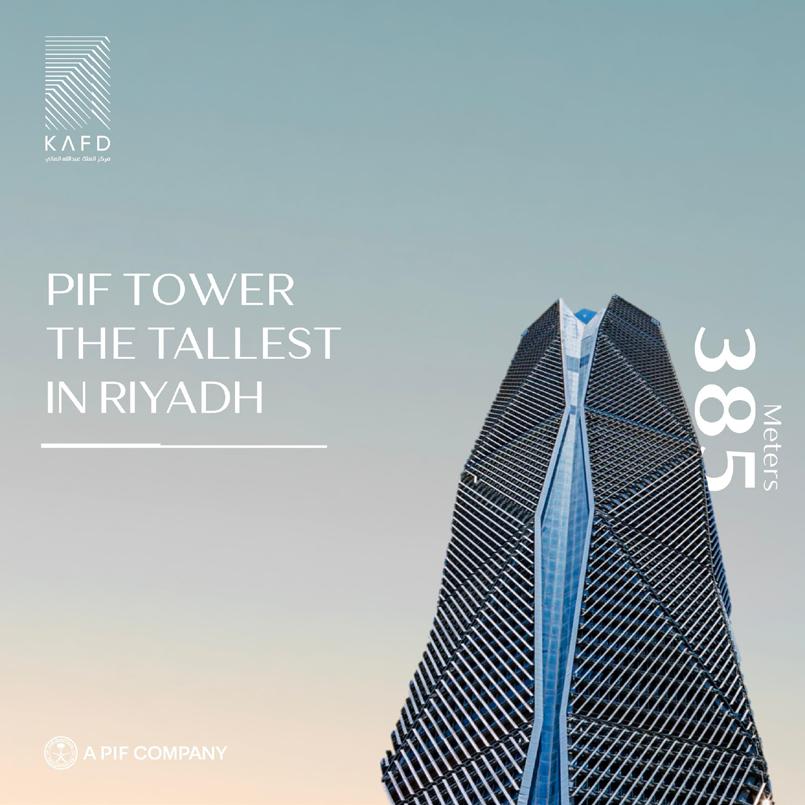
KAFD DMC’s primary objective is to create a world-class business environment that not only serves as a hub for the financial sector but also promotes a sustainable and high-quality lifestyle. The district hosts a variety of global companies, including Deloitte, Accenture, Pfizer, and ExxonMobil, alongside key Saudi entities like the Saudi Stock Exchange (Tadawul) and the Public Investment Fund (PIF). CEO Gautam Sashittal highlighted that the district is not just about physical structures but is part of a broader vision of economic growth, business innovation, and social transformation.
“We are building more retail, more office space... because that is the ecosystem we are activating. 2024 is about activating the city and building for the future,” he
explained, referring to the ongoing expansion and future developments planned for
KAFD.
Amazingly, for a project of this scale and ambition, KAFD DMC is still committed to integrating sustainability into their core operations. This commitment is demonstrated through its partnerships with global organizations like the United Nations Country Team (UNCT) along who they are focusing on advancing the Sustainable Development Goals (SDGs). The collaboration aligns KAFD’s goals with Saudi Arabia’s national priorities, contributing to sustainable urban development while driving innovation in green architecture and business practices
According to Sashittal, keeping sustainability in mind opens more doors than it will ever close, “Successful sustainable development is premised on cross-sectoral partnerships and a strong sense of purpose; this is key to KAFD’s business model,” he says, adding, “Through initiatives like this, KAFD DMC not only builds sustainable infrastructure but also promotes Riyadh as a key destination for international business”.
Lifestyle and hospitality development options are another critical focus for KAFD DMC, and the company has forged partnerships with international hospitality brands, such as Equinox Hotels, to bring luxury and high-performance lifestyle offerings to Riyadh. The introduction of Equinox Hotels reflects KAFD’s strategy to cater to both business and







leisure travellers, creating a seamless experience that aligns with the district’s premium business environment
The hospitality expansion also includes the construction of new hotels, office spaces, and luxury residences, all designed to meet the highest standards of modern urban living. Sashittal emphasizes that these developments are crucial for enhancing Riyadh’s appeal as a global city, noting,
“We are building apartments that reflect the sort of quality and vision for the district, which is to create a prime destination for business and lifestyle.”
While under the leadership of Sashittal and key executives like Sultan Alshahrani, KAFD DMC has gained recognition for its achievements in various sectors, including procurement and sustainability.
Alshahrani, the company’s Chief Corporate Officer, was recently awarded the CIPS Procurement Pioneers Award, recognizing KAFD DMC’s efforts in setting new benchmarks for ethical and professional procurement standards . What this recognition reflects is the company’s broader philosophy of excellence, innovation, and integrity across its operations and as Sashittal remarked at the time, “We see this achievement not only as a pinnacle but as an inspiration to uphold the highest standards as we continue to shape the future of KAFD.”
Looking ahead, KAFD DMC has ambitious plans to further enhance the district’s role in both the national and global economy. With the upcoming Riyadh Metro, KAFD will become even more accessible, positioning it as a key hub for business travellers and tourists alike. Sashittal envisions a future where visitors can easily commute from the airport to the district via metro, providing convenience and boosting business tourism

Furthermore, KAFD DMC aims to future-proof its developments by creating flexible, humancentric spaces that adapt to the evolving needs of businesses and residents. “You have got to make cities and urban centres human-centric... you have to future-proof your structures,” Sashittal said, underscoring the company’s focus on creating sustainable and resilient urban infrastructure
The King Abdullah Financial District Development and Management Company is at the forefront of Saudi Arabia’s urban and economic transformation. Through their innovative approach to sustainable development, strategic global partnerships, and a commitment to creating a premier business and lifestyle destination, KAFD DMC is poised to play a pivotal role in shaping the future of Riyadh and beyond. As the district continues to evolve, they will serve as a model for other global financial hubs looking to blend business, sustainability, and highquality urban living.
Goldman Sachs is making its mark in Saudi Arabia by establishing a new office at Riyadh’s King Abdullah
Financial District (KAFD), the country’s ambitious hub of business, lifestyle, and sustainability. This move, set for 2025, solidifies Goldman Sachs’ longstanding influence in Saudi’s financial sector. With a 1,368 square-meter office space in the high-tech, eco-conscious KAFD, the firm joins the likes of PIF, the Capital Market Authority, and Tadawul in Riyadh’s financial epicentre, reinforcing its regional commitment and ambitions to expand in asset management, wealth management, and banking.
KAFD itself is a mixed-use marvel, integrating Grade A offices, luxury residences, and vibrant retail and hospitality spaces within a 10-minute walkable district. The development stands as Saudi Arabia’s first vertical city, boasting WiredScore’s Global Smart Neighborhood Certification and platinum LEED certification, making it an efficient, green powerhouse designed to keep pace with the nation’s rapid transformation.
Sultan Alobaida of KAFD DMC emphasized Goldman Sachs’ role in Saudi’s economic evolution, stating that this partnership supports the Kingdom’s financial momentum, driven by government reform and the rise of fintech. Co-CEOs Fadi Abuali and Zaid Khaldi echoed this sentiment, underscoring that KAFD’s modern facilities align with their vision for growth in the region. Goldman Sachs’ move into KAFD is more than a new address—it’s a strategic alignment with Saudi’s aspirations to position itself as a global financial leader.
imlost@thelostexecutive.com

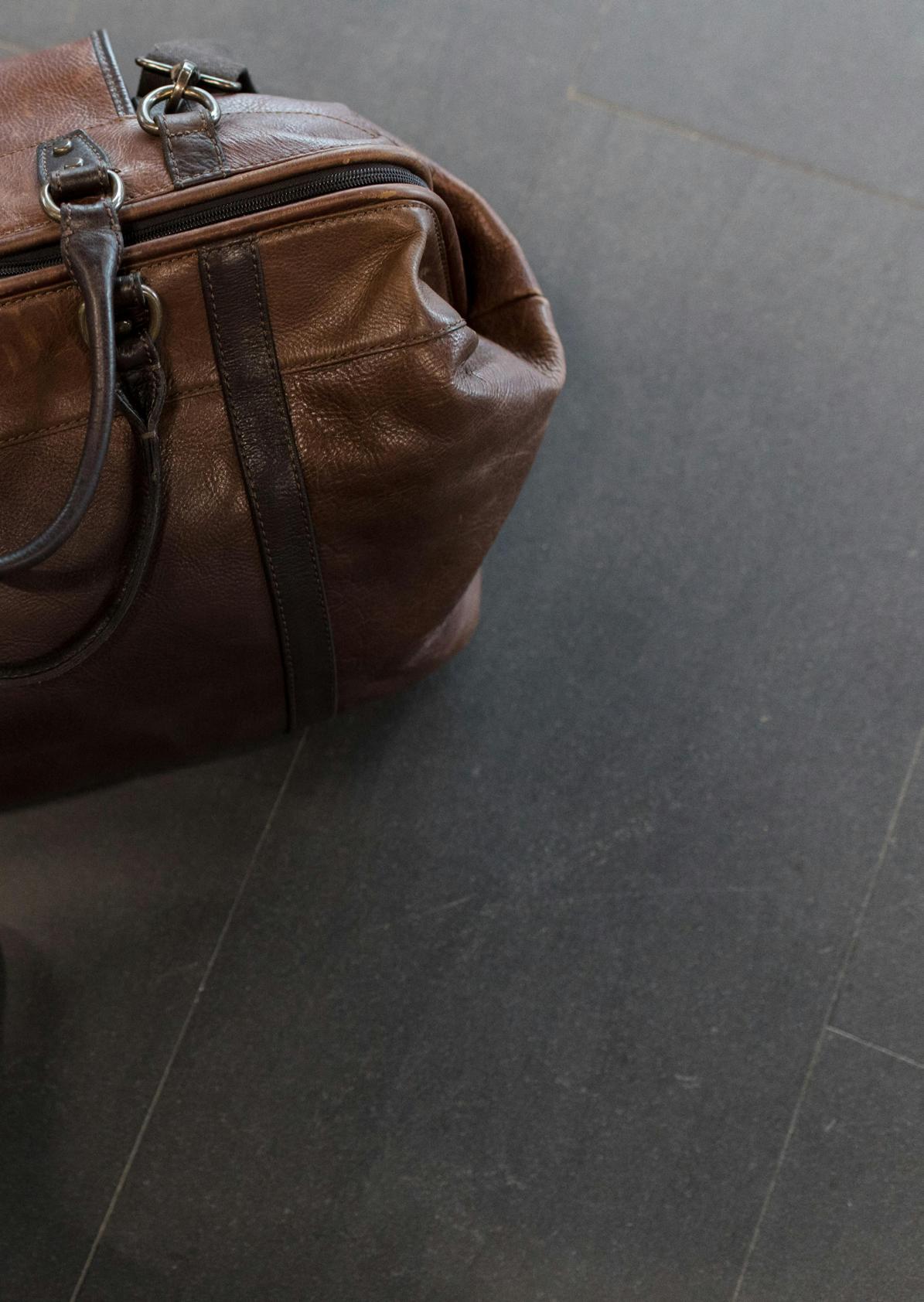
By Cassidy Banks
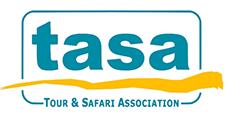

Founded in 1989, The Tour and Safari Association of Namibia (TASA), has played a pivotal role in promoting responsible tourism within Namibia. As a private sector organization, TASA advocates for high standards across the industry and ensures that those Namibian tour operators within their association are in the best place to maintain professionalism and reliability. Their mission is to enhance the quality of tourism services while championing sustainable tourism practices, which have become a cornerstone of their initiatives. Cassidy Banks explores.
TASA focuses on fostering the development of sustainable tourism in Namibia, aligning with global trends that emphasize eco-friendly travel. They work closely with tour operators to ensure high operational standards, and their membership offers a platform for members to network, collaborate, and gain exposure to international markets. For instance, through their Eco Awards Namibia initiative, TASA recognizes enterprises that excel in conservation efforts, water and waste management, and other eco-friendly practices. This
not only uplifts Namibian tourism but also helps position the country as a desirable destination for environmentally conscious travellers.
The association also represents their members’ interests in regulatory discussions and collaborates with governmental bodies like the Namibian Tourism Board to influence policy. This advocacy ensures that the tour operators remain aligned with both local laws and international tourism expectations.
TASA’s commitment to their members goes beyond basic representation. It nurtures strong relationships with tour operators, fostering an environment of trust and mutual benefit. Members gain access to resources such as discounted services from partner suppliers and the opportunity to be part of prestigious industry events like the Travel Namibia Festival. This event, co-hosted by TASA, brings together key stakeholders to discuss tourism trends, sustainable travel, and investment opportunities. Such platforms are crucial for networking, knowledge sharing, and staying ahead of emerging trends in the tourism industry.
Moreover, TASA offers members support in the form of training and development opportunities,
focusing on areas like sustainability and responsible travel. This approach not only builds the capacity of individual operators but also elevates the collective reputation of Namibian tourism.
Tom Mpemba, a member of the TASA board, said recently, “Being part of TASA helps us stay competitive and connected to global best practices, ensuring that Namibia remains a top destination for travellers worldwide.”
What sets TASA apart from other tourism associations is their unwavering focus on sustainability. While many organizations may prioritize growth, TASA embeds ecological consciousness in its core operations. Through their Tourism Supporting Conservation Trust (TOSCO) membership, TASA connects tourism businesses with conservation efforts, ensuring that rural communities directly benefit from tourism. This alignment with conservation is unique, as it fosters a symbiotic relationship between tourism and environmental stewardship, contributing to Namibia’s long-standing success in conservation.
TASA’s engagement with initiatives like the Responsible Travel Awards, which are linked to the Eco Awards, further reinforces their dedication to sustainable tourism. These efforts have attracted the attention of international travel agents who seek out destinations that prioritize sustainability, making TASA members more competitive on a global scale.

Another differentiator is the association’s strong advocacy role. TASA not only represents their members in the business realm but also engages in policy advocacy to create a favourable regulatory environment for tourism operators. By maintaining close relationships with key government bodies, TASA ensures that the interests of tour operators are well-represented in policy dialogues.

Looking ahead, TASA has set ambitious plans for 2025, focusing on innovation, sustainability, and deeper collaboration within the industry. One of the key upcoming events is the Travel Namibia Festival 2025, slated for May. This event will continue to foster dialogue around conscious tourism, investment in tourism infrastructure, and emerging trends such as travel technology and marketing innovations. According to TASA’s leadership, the 2025 event will be even more expansive, with more exhibitors, workshops, and networking opportunities designed to position Namibia as a leader in sustainable travel.
In terms of sustainability, TASA plans to enhance their Eco Awards Namibia program by expanding the scope of assessments and certifications, allowing more operators to qualify and gain recognition for their efforts. As the global tourism industry continues to prioritize eco-friendly practices, TASA aims to ensure that their members lead by example, making Namibia a premier destination for travellers seeking authentic and sustainable experiences.
Frans Ndoroma, a member of TASA’s executive committee, has emphasized the importance of these
plans: “We are committed to not only maintaining the standards we’ve set but also pushing the boundaries to ensure that Namibia becomes synonymous with sustainability in tourism.”
TASA also plans to expand their educational and training programs for members, ensuring that they are equipped with the latest tools and knowledge to thrive in an increasingly competitive market. By 2025, TASA aims to integrate more technological solutions into the industry, facilitating easier access to resources and fostering innovation among tour operators.
The Tour and Safari Association of Namibia stands as a pillar of responsible and sustainable tourism in Namibia. Through their various initiatives, such as the Eco Awards Namibia and partnerships like TOSCO, TASA is actively shaping a tourism sector that not only supports economic growth but also prioritizes environmental and social responsibility. With ambitious plans for 2025, including an expanded role in promoting sustainable travel and fostering innovation, TASA is well-positioned to lead Namibian tourism into a future where sustainability is not just a trend but a standard practice.
by Sara Essop
Imagine soaring above the vast, untouched wilderness of Namibia, where sweeping dunes meet endless horizons, and wildlife roams freely beneath you. With Desert Africa Safaris, this dream becomes a reality. From the towering red dunes of Sossusvlei to the rugged expanse of the Skeleton Coast, this premier safari operator creates exclusive opportunities to discover Namibia’s captivating wonders through a variety of aerial and other, safari experiences.
The company is part of the larger Desert Air Charters group, which was founded by Matthys Rall in 1996 as a one-man operation. In 2018, his daughter, Carien Rall Swanepoel, who had prior experience in tourism, launched the safari department to offer private charter fly-in safaris. Their offices are closely located to each other in Windhoek.
Despite challenges during the COVID-19 pandemic, the company has grown to three employees, including a German-speaking consultant to service German tourists. While initially concentrated on Namibia, its services now include Botswana and
Zimbabwe, with South Africa and Zambia following soon. All these destinations are known for their beautiful, ever-changing landscapes, exciting wildlife and diverse cultures.
Desert Africa Safaris provides highly personalised service from the initial contact until guests return home. Transport and accommodation providers are carefully selected to maintain high standards and services are adapted to each country. In Namibia, trips are planned in close collaboration with suppliers, with private charters often used due to the vast distances. Guests are accompanied by a pilot throughout their journey. In Botswana, scheduled seat-in charters with all-inclusive package deals are preferred, as the lodges are closer to one other. In Zimbabwe, the focus is on Victoria Falls and nearby reserves.
While primarily catering to well-travelled, upmarket customers, they accommodate all requests based on individual preferences and budgets, and cater for solo travellers, couples, and small groups, as well as larger groups travelling on a budget that prefer to self-drive.

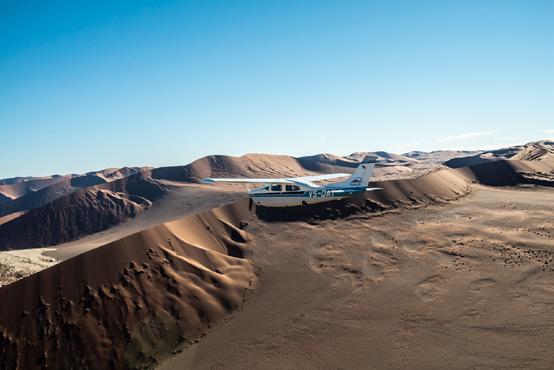
Clients can expect a professional yet personal touch. Bespoke itineraries are created within 1224 hours, and concerns are responded to within minutes, even after hours. They receive detailed electronic and printed trip schedules, and all activities, transfers, and bookings are meticulously pre-planned to ensure smooth coordination. Dietary requirements and special occasions are also considered. Upon arrival, clients are welcomed with gifts, and if they pass through Windhoek, they are personally met for dinner or drinks.
Recent initiatives include combined packages that allow guests to experience Namibia by both air and road. Long distances are covered by plane, giving guests more time at lodges, while also visiting scenic areas that are not easily accessible by road. Low-level scenic flights over iconic landscapes like Fish River Canyon, Sossusvlei, and the coastline are included where possible, and the itineraries are continuously refined based on past requests and direct feedback from customers.
The best time to travel depends on the client’s preferences. Namibia’s summer is hot and often rainy, while winter aligns with the European summer holidays, when families tend to visit. Most travellers are from Europe, particularly Germany and Switzerland, as well as the U.S. Desert Africa Safaris also caters to the young, retired sector, receiving travel requests throughout the year.
Key lessons learned during the company’s journey are that it’s crucial to account for language barriers and tailor communication based on the client’s nationality when handling customer conversations about travel plans. Clients are unpredictable, so one should never assume their budget, understanding, or likelihood to confirm. Additionally, each customer
requires a distinct approach, even though service standards should always be maintained consistently.
Carien enjoys the diversity of people and requests she deals with, finding excitement in confirmed bookings and positive feedback. She values the lasting relationships formed with recurring guests and embraces challenges, believing no idea is too far-fetched. With years of experience in incentive tourism and event planning, she aims to think creatively and deliver unique solutions.
Communication within the company is emphasised and staff are encouraged to be innovative and handle their tasks independently. They attend supplier presentations to keep up with industry trends and developments. Marketing is implemented through social media, search engine advertising, print publications, and exhibitions, and the team is always eager to try new concepts and generate ideas for improvement.
Upcoming plans include more site visits and trips aimed at expanding itineraries to cover more of the countries already available. Community involvement is also a priority, with a focus on supporting disadvantaged children facing uncertain futures.
Website: https://www. desertafricasafaris.com/
Telephone: +264 (61) 223 699
Email: info@desertafricasafaris.com
Socials: Facebook, Instagram


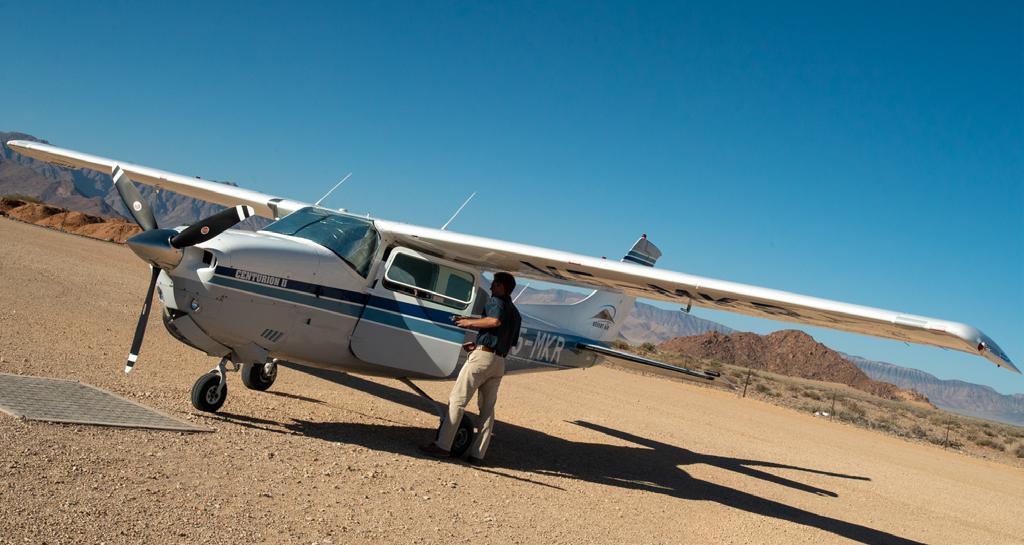
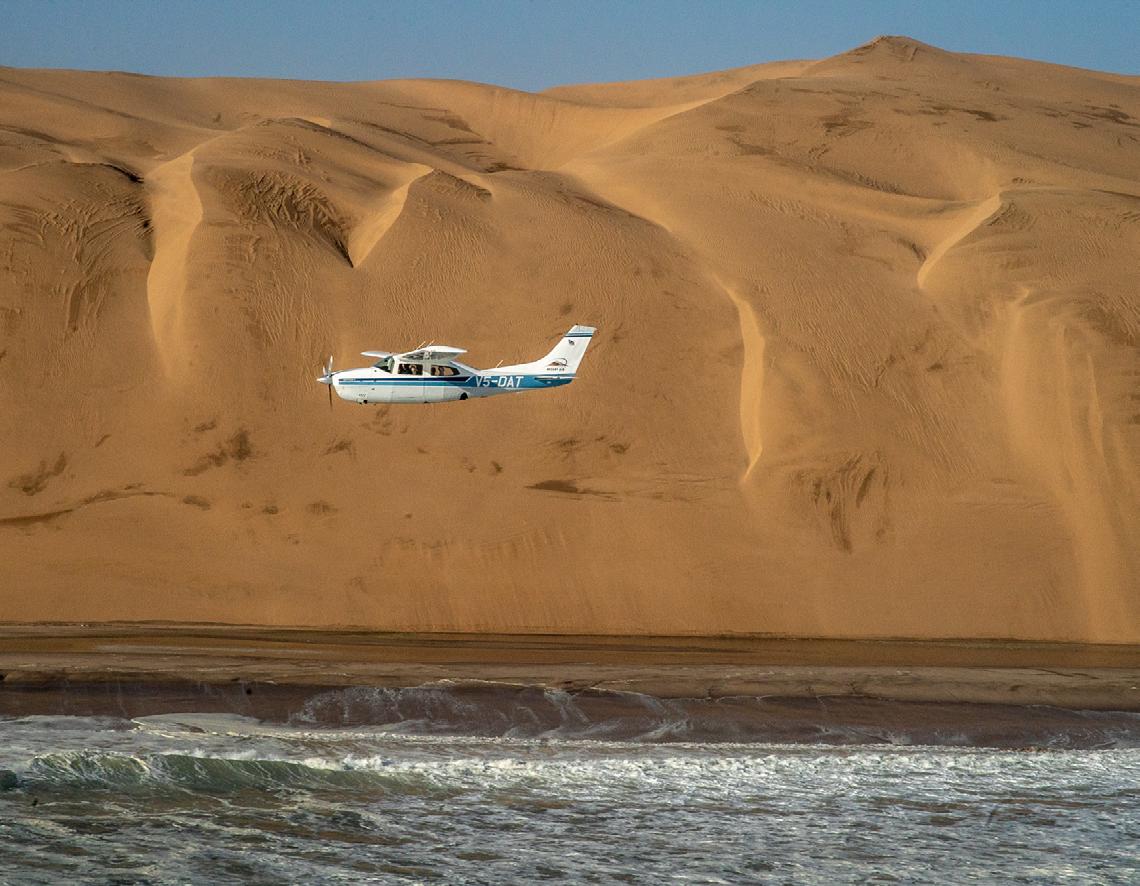


By Donnie Rust

The Isle of Arran, often hailed as “Scotland in Miniature,” offers stunning landscapes, rich history, and a unique blend of rural charm that maintains a popular tourism trade. Yet, beneath its idyllic surface, a growing crisis threatens to choke the very lifeline that sustains it: the ferry service.
For residents and visitors alike, the ferry is not just a convenience; it’s a necessity, serving as the island’s primary connection to the mainland for everything from medical care to tourism. However, ferry cancellations, outdated vessels, and delayed infrastructure projects have led to widespread frustration and economic challenges for this small but vibrant community.
The Arran ferry system, which connects the island to the mainland via Brodick and Ardrossan, has long been a point of contention. In theory, this service should provide reliable transport for people, goods, and services but in reality, though, it has become a source of anxiety, particularly during peak tourist seasons and harsh weather conditions. Ferry cancellations are frequent, often leaving both locals and tourists stranded on either side of the Clyde. This unpredictability severely impacts Arran’s
tourism-driven economy, a major concern for local businesses and the island’s 4,000 residents.
During the summer months, when tourism peaks, two ferries run daily between Arran and the mainland. In the winter, this number drops to just one ferry, which increases the risk of travel disruptions, especially as the ferry routes are susceptible to adverse weather conditions. Even worse, the vessels themselves are several years beyond their scrappage dates, leaving them prone to frequent breakdowns.
While the unreliable service is frustrating, the root of the problem extends beyond just weatherrelated issues. One key reason for the ongoing ferry troubles lies in outdated infrastructure and mismanagement of the ferry-building process. The vessels currently in operation are overdue for replacement and plans to introduce a new ferry have been mired in delays.
Back in 2015, Ferguson Marine, a shipbuilding company based in Port Glasgow, was awarded the contract to build two new ferries to serve Scotland’s islands, including Arran. The vessels were meant to be completed by 2018, but the project has been
plagued by cost overruns and delays. By 2019, Ferguson Marine went into administration, and the Scottish government stepped in to nationalize the company in an attempt to rescue the project . As of 2024, the new ferry is still incomplete, and there is no clear end in sight for when it will be operational. The repeated delays have not only prolonged the use of aging vessels but have also exacerbated public frustration. Islanders feel let down by what they see as a lack of prioritization for essential services, with many questioning why the decision-making process ignored local knowledge. For instance, when the ferry routes were established after World War II, local fishermen and ferry captains recommended building harbours at Lamlash and Fairlie to ensure safer passage. However, their advice was ignored in favour of shorter but more exposed routes between Brodick and Ardrossan, which are more vulnerable to weather disruptions
The consequences of unreliable ferry services extend far beyond mere inconvenience. For many Arran residents, particularly the elderly or those requiring regular medical treatment, being cut off from the mainland is more than an annoyance, it can be life-threatening. With no hospital on the island, those with medical emergencies often have to rely on air transport if ferries are unavailable.
Expectant mothers are also urged to leave the island well before their due dates to ensure they can access proper medical care on the mainland, as Arran lacks sufficient maternity facilities. The birth of Caleb Terrence Vipond-Relf in January 2024 was a rare occurrence, marking the first birth on the island in over three decades
Tourism, Arran’s most important economic driver, is also taking a hit. With cancellations often happening last minute, tourists are left scrambling for alternative accommodations or transport, which deters potential visitors from even making the trip. The ferries can be booked up to weeks in advance, especially for cars, making spontaneous visits almost impossible. Local businesses that depend on tourist footfall are reporting significant losses, with some fearing they may not survive another summer of ferry disruption.
In response to mounting public pressure, the Scottish government has made efforts to address the crisis. The nationalization of Ferguson Marine was a key step, though it has so far failed to produce the results the island desperately needs. The ongoing delays have left islanders sceptical of the government’s ability to deliver on its promises.
One of the major criticisms from the Arran community is that they have not been sufficiently involved in decisions that directly affect their lives. Residents often feel overlooked when it comes to choosing ferry routes or determining priorities for infrastructure investment. The decision to build shorter but more treacherous routes exemplifies this disconnect between decision-makers and those who understand the island’s unique challenges.

Locally, there is a growing call for more significant investment in island infrastructure, with some advocating for an independent review of the ferry system. Some
have even suggested that new ferries should be commissioned from alternative shipyards to avoid the pitfalls experienced with Ferguson Marine. However, such moves would take time—something that many on Arran feel they no longer have.
So, how long will it take until Arran’s ferry problems are resolved? Unfortunately, the timeline remains unclear. The Scottish government has hinted that the first of the delayed ferries may be operational by 2025, but islanders remain cautious. Given the history of missed deadlines, many feel it’s unrealistic to expect a solution in the short term.
In the meantime, discussions about interim solutions have surfaced. Some have proposed that older ferries from other routes could be redeployed temporarily to Arran while waiting for new vessels. Others believe that expanding existing services,
such as adding more sailings from different ports, could alleviate some of the pressure. However, these solutions are seen as stop-gaps rather than permanent fixes.
Ultimately, the situation on the Isle of Arran is a complex interplay of logistical challenges, governmental mismanagement, and natural vulnerabilities. While efforts are being made to address the issues, residents of Arran will likely continue facing uncertainty for years to come. Until reliable ferry service can be restored, the island’s economy, health services, and sense of connectedness with the mainland will remain in jeopardy.
For Arran, the ferries are more than just a mode of transport—they are the arteries that keep the island alive. Until this lifeline is repaired, life on Scotland’s hidden gem will remain at the mercy of the winds, the waves, and decisions made far away from its shores.
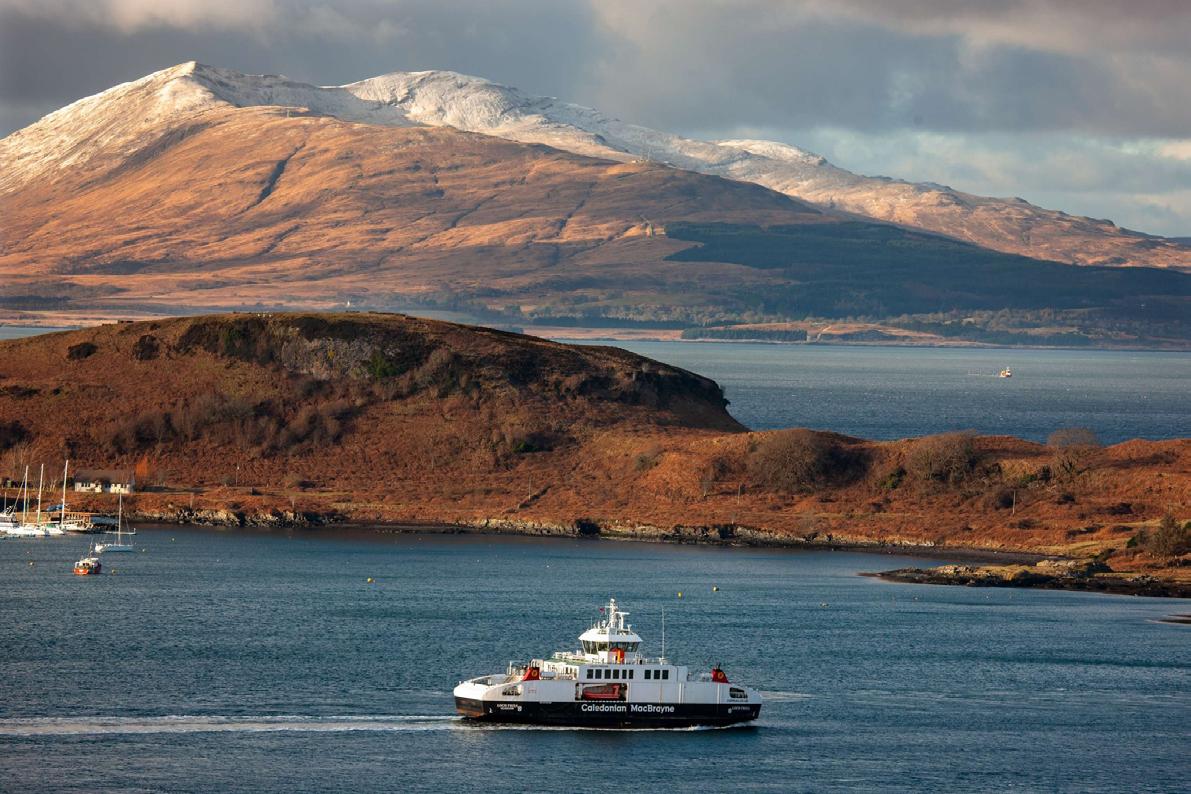
By Donnie Rust
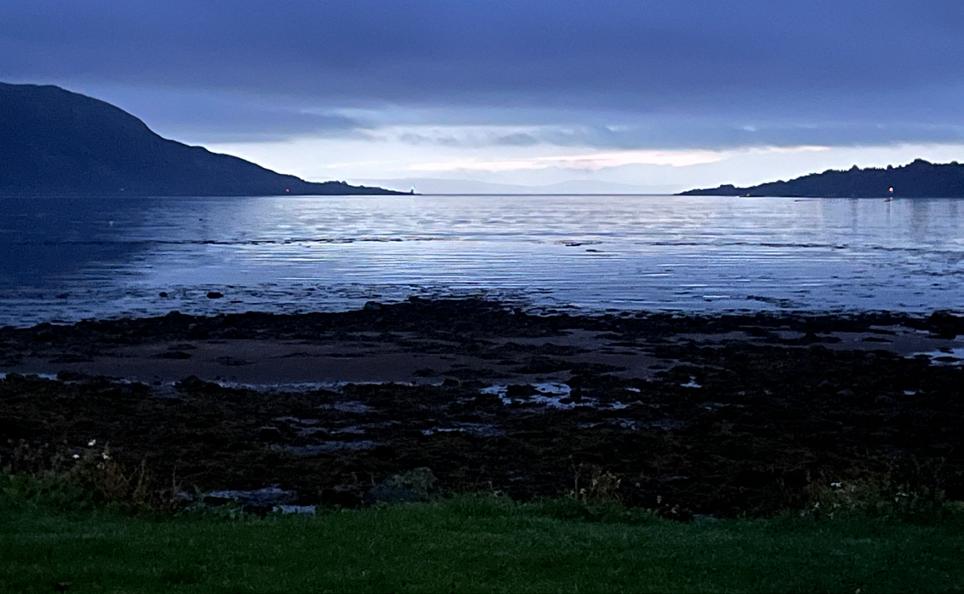
Situated in the heart of Lamlash on the Isle of Arran, the Glenisle Hotel offers an authentic Scottish experience for those seeking the seclusion of a seabound isle. Situated right on the island’s east coast, a stone’s throw from the water, the hotel is easy to find and offers great food, a variety of drink and plenty of local colour. What is immediately apparent is that over the years, the hotel has established itself on the line between tourist accommodation and local watering hole.
Glenisle Hotel gets their trade from the many cyclists, hikers, campers, adventurers and history enthusiasts visiting the island and the small local population (around 4000 people), who have staked a claim on the various pubs and hotel bistros as
their locals. As such upon arriving there was not only a sense of welcome, but a genuine interest to who I was and where I came from and what stories I had to share.
There are few destinations that have such a sense of their own spirit that it is immediately palatable when you walk in. Usually there is a detachment that occurs, providing a cloak of obscurity and anonymity to the travel writer, allowing us to move almost unseen through corridors, dining halls and rooms, making our little notes about architecture, style, door security and decor. It’s like walking around the circumference of a pool to write a review before taking a plunge. Here, there are no steps into the pool, you just have to jump or be pushed.
This was demonstrated to me on the first night: I arrived late due to the ferry (which is alarmingly common) and managed to get dinner just before the kitchen closed. No sooner had I finished my meal when I was dragged by the arm to a table to join a group of revellers because they could not abide a traveller sitting alone! But more on that later.
The hotel’s dining area, complete with a conservatory extension, is where the magic of the island’s flavours comes alive. I started my meal with a delicious lentil soup, served hot with steaming fresh baked bread. For the main course, the steak pie was hearty and satisfying, followed by a “Krakken coffee,” which was an enjoyable twist to end the meal. Even with a full house, the service was attentive, and the overall vibe remained relaxed and welcoming.

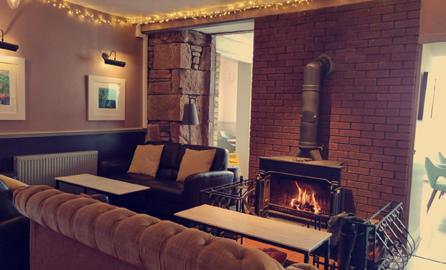
Breakfast at Glenisle deserves a special mention. The following morning, I opted for the unique Glenisle banana split alongside a latte. Enjoying breakfast, I was able to appreciate the scenery which had been lost to me the night before. While looking out from the conservatory onto the fogcovered mountains, with the textured green canopy peeking out from shrouds of mist, it felt like stepping into a painting.
The pace of breakfast service was smooth, with tables quickly occupied but never rushed, and guests were invited to relax in the bar area afterward for a leisurely coffee.
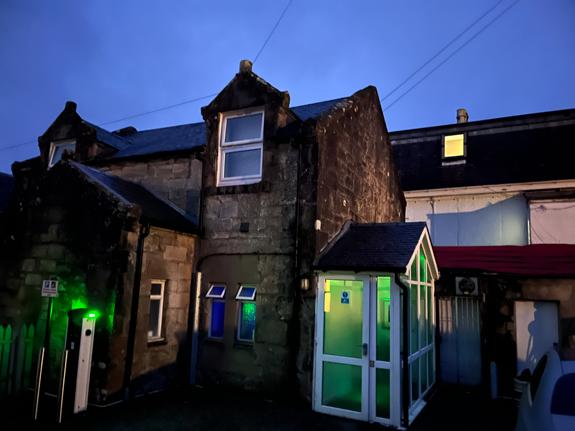


Arran itself, often referred to as “Scotland in Miniature,” offers a unique sense of scale that you simply don’t get in a city. The island’s mountainous backdrop contrasts with the expansive waters of the Firth of Clyde, creating a sense of both depth and distance. Driving the island’s ring road, which can be done in a few hours, provides a real appreciation for the island’s varied landscape, which includes rugged coastlines and lush forestry.
However, Arran’s appeal goes beyond its scenery. There’s a palpable sense of history here, with remnants of old settlements and ruins scattered across the island. Arran once boasted a historic and long-lost population of 20,000 at its peak, but
The accommodation itself, especially the cottage annex where I stayed, offered a private and spacious retreat with thoughtful details, like underfloor heating and entertainment options that make it perfect for groups or families. However, it’s also a great option for solo travellers seeking some solitude.


now it’s home to just 4,000, contributing to a quiet, introspective atmosphere.
The island is not without its challenges. Ferries are a crucial lifeline, and while the service connects Arran to the mainland, it’s prone to delays due to weather or mechanical issues. This adds an element of unpredictability, especially for tourists during peak season. However, the ferry issues seem to unify the locals, reinforcing the strong sense of community that defines the island.
Arran’s industries are rooted in forestry and tourism, the latter benefiting greatly from the island’s natural beauty, whiskey distilleries, and golf courses. Interestingly, the island is also known for producing the granite used in Olympic curling stones, though strict limitations on extraction ensure that Arran’s natural resources remain protected.
The people of Arran are as much a part of the island’s charm as its landscapes. Whether it’s the sense of community that comes through
during times of hardship (like the infamous 2013 snowstorm) or the vibrant social life you encounter at places like the Glenisle Hotel, the island has a way of drawing you in. You arrive as one person and leave having been subtly transformed by the island’s rhythm and hospitality.
The Glenisle Hotel stands as a beacon of warmth and hospitality on this beautiful island. It offers a genuine taste of Arran’s culture and charm, making it an ideal base for exploring the island. Arran, with its mix of history, rugged beauty, and close-knit community, remains one of Scotland’s hidden gems. It may not have the conveniences of the mainland, but what it lacks in modern amenities, it makes up for in heart and soul.
About to sleep up to 14 people across a selection of rooms including cosy and standard doubles, standard/twin doubles, superior and premier suites.
Booking: www.glenislehotel.com/ accommodation/
Address: Glenisle Hotel, Shore Road, Lamlash, Isle of Arran, KA27 8LY.
Telephone: 01770 600559

By Foylan Rhodes
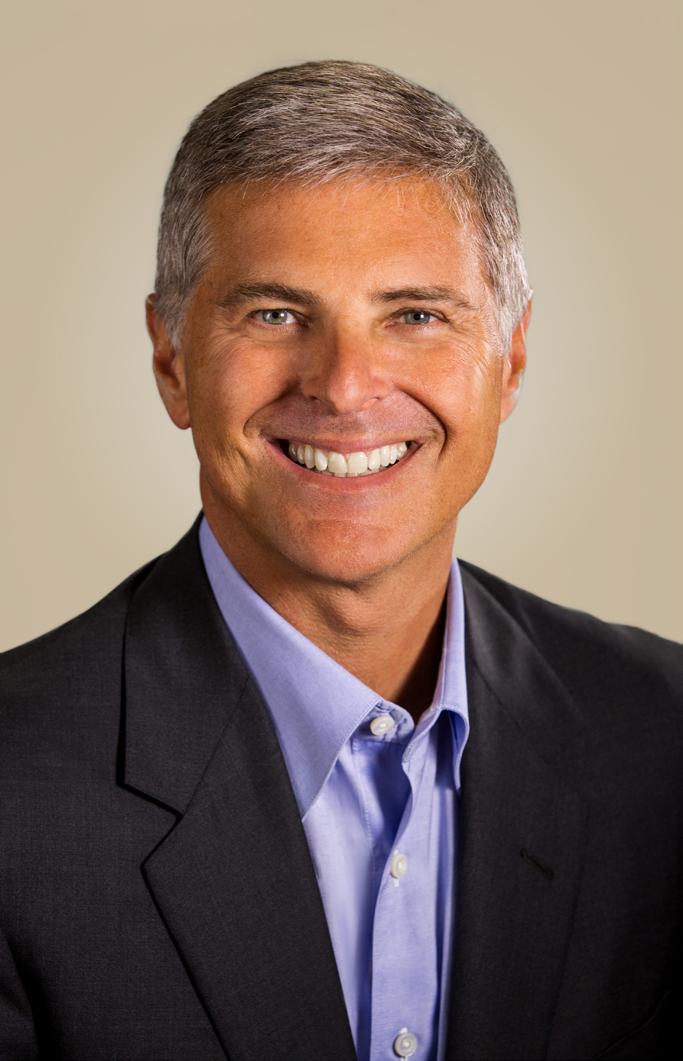
Chris Nassetta, CEO of Hilton, has shaped the world-famous hotel brand’s direction with a focus on enhancing service, growth, and a strong employeecentric culture. Following the cardinal law of hospitality, look after your staff and they will look after your guests, he has broken the ceiling on the industry and taken the hotel name to new heights. Foylan Rhodes investigates.
Joining Hilton as CEO in 2007, Chris brought with him significant industry experience. Before Hilton, he was President and CEO of Host Hotels & Resorts, where he honed his skills in operational efficiency and strategic expansion, setting the stage for what has to be called his transformative role at Hilton.
“I believe you have to be grounded in creating a positive, inclusive work environment that empowers employees,” he says, “It is essential to deliver exceptional service and sustainable long-term growth. Your staff are always your primary asset.”
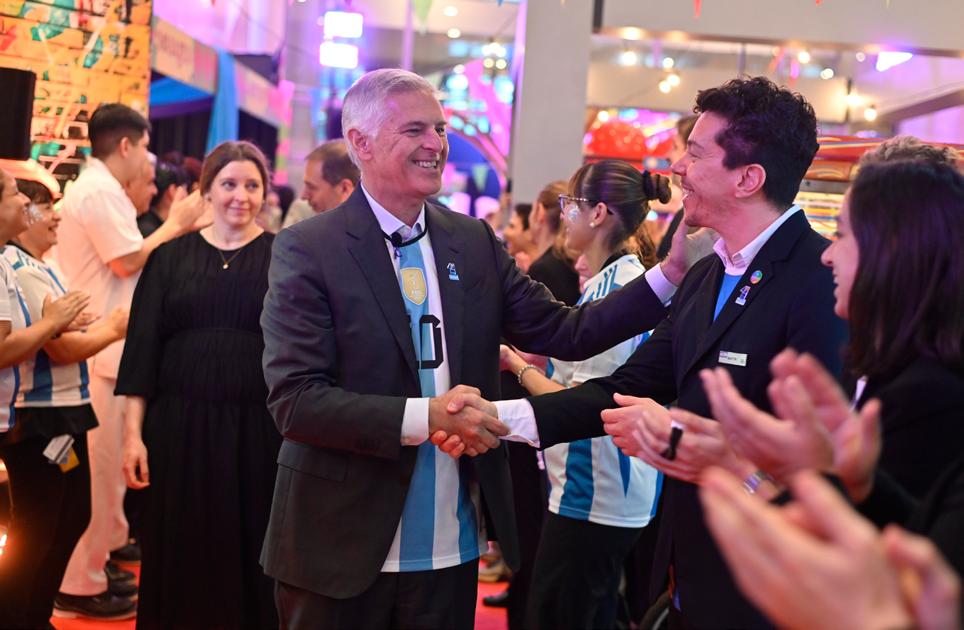
And his philosophy clearly works. Under Nassetta’s leadership, Hilton has grown exponentially and today operates some 7,500 properties in 138 countries, with more than 1.25 million rooms, while employing approximately 430,000 people globally.
Known for prioritizing both employee wellbeing and customer satisfaction, Nassetta has fostered an award-winning workplace culture. This commitment has earned Hilton numerous accolades, including a spot on Fortune’s list of “100 Best Companies to Work For” and recognition as one of the world’s best employers by Forbes. Nassetta attributes these achievements to Hilton’s workforce, emphasizing that exceptional service stems from a motivated and appreciated team, part of which requires putting a face to a name.
“Even for a company as large as ours it is important that people know who they are working with,” he says, “Wherever possible you need to break down barriers of communication and often that just involves being present.”
This was demonstrated throughout this past year following a record-breaking year of growth where Hilton underscored its commitment to the Caribbean and Latin America (CALA) alongside a visit by Chris in which he met with industry leaders, ownership groups, partners, and team members across Argentina, Peru, Colombia and Costa Rica.
He explains that in 2023, Hilton opened nearly 20 new hotels and ended the year with 4,000 rooms
added in the market, more than in any other year in the company’s history. This sort of positive movement is expected to be sustained as Hilton continues to implement its growth strategy to aggressively expand across the region with the goal of surpassing 300 open hotels in the next three years.
“I have always loved visiting our teams in the Caribbean and Latin America, and Hilton’s transformation across the region is an incredible example of the power of our hospitality. Over the last decade, we have tripled our presence to 225 hotels in our CALA portfolio,” said Chris, “Now, with more than half of our pipeline in the region under construction, we are on track to open our 300th hotel in just a few years. This expansion is the result of our team’s winning growth strategy and deep knowledge of the market, the vision and confidence of our valued partners, and our team members’ dedication to creating unforgettable stays for all our guests.”
Hilton celebrated its three-fold growth in the Caribbean and Latin America over the past decade adding nine new countries and territories and launching seven new brands. Building on its 225 open hotels that welcome travellers today, the company has a robust pipeline of more than 100 hotels and plans to enter seven new countries and territories in the next few years, including Bermuda and Paraguay in 2024. The company also looks forward to introducing two new brands: Spark by

Hilton, which is redefining the economy segment with a premium product offering, and Home2 Suites by Hilton, an award-winning extended-stay hotel concept.
Nassetta adds that he joined hundreds of team members at Hilton Buenos Aires and Hilton Pilar in Argentina, Hilton Lima Miraflores in Peru, and Hilton Bogota Corferias in Colombia to celebrate the company’s award-winning culture, which made history in 2023 as the #1 World’s Best Workplace.
This year as well, the brand earned the #1 spot in Peru and Uruguay, a recognition it has obtained for three consecutive years, and also ranked #1 in the Dominican Republic and the Caribbean for the second year in a row. Additionally, Hilton was listed as the #2 best workplace in Argentina and Panama and still holds the spot as the leading hospitality company in Latin America.
Chris reveals that 2023 was a year that the world moved forward. Travellers filled airports, packed stadiums, reinvigorated restaurants and energized hotel lobbies. The new Golden Age of Travel that the industry was anticipating arrived in full force. However, even though the world moved faster than ever, a fascinating paradox emerged with the Hilton guests.
“At the same time, travellers are inspiring real change in how we travel, with relation to ecotourism and green-transport but are also appreciating the moments when they are able to slow down,” he says, “They dedicate time to building inperson connections and blur the lines between business and leisure travel, finding ways to expand their horizons no matter the occasion. And very importantly, travellers rallied around the universal appreciation for sleep.”
It was understanding these sorts of insights at the start of the year that made Chris galvanise the brand to further drive innovation and change for Hilton and their industry.
“Furthermore,” he adds, “We were able to take a deeper look at how generations view travel, from the digital-native Gen Zer to the experienced Boomer. The information available on this painted a detailed picture of the hospitality landscape and where Hilton stood on it.”
Throughout 2024, he says that they were confident and optimistic and knew that people of all ages will continue to seek out travel experiences as an opportunity to gain new, life-defining moments. What was needed from Hilton was to continue to fill the world with the light and warmth of hospitality while creating exceptional stay experiences for every traveller.
Not a complicated man, Chris reveals that simple plans often work and his success has been based largely on collating the best data and making decisions based on it. For example, he reiterates that travellers today value personal wellness and a good night’s sleep while on the road, be them leisure or business guests.
Additionally, they will seek out consistent and seamless experiences that are personalised to their needs and expect technology to be intuitive
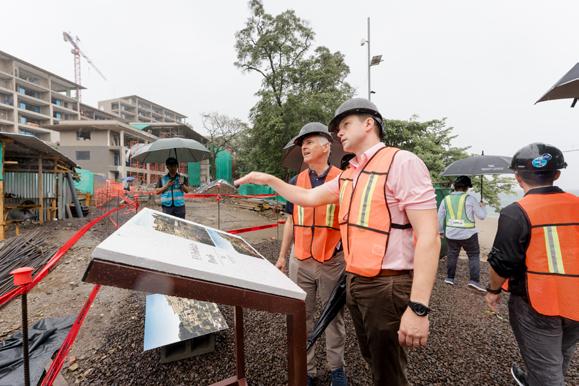
and helpful throughout their journey. Booking decisions will be based specifically on this which has led to significant upgrades on Hilton’s backend systems supporting their guest-facing software and hardware.
Especially in business travel, which Chris is very much acquainted with, he says that travel trends will redefine expectations, “New programmes and products now cater to travellers’ shifting needs,” he observes, highlighting significant changes in traveller demographics, trip durations, travel purposes, and destinations. “As the world progresses, the industry is adapting, addressing new dynamics in why, where, and how we conduct business while on the move,” he adds.



By Donnie Rust
The 2024 Mercedes A180d AMG Line is a model that strives to blend premium aesthetics with practical, everyday usability. Targeted towards drivers seeking an entry-level luxury car, it offers a diesel engine wrapped in Mercedes’ signature styling and technological innovations. But how does this vehicle fare in terms of driving dynamics, comfort, and overall value?
The A180d AMG Line carries the iconic MercedesBenz design language but adds sportier, more aggressive touches thanks to its AMG trim. This includes sleek bodywork with sharper lines, a lowered suspension, and 18-inch AMG alloy wheels. Its sporty front grille, flanked by LED headlights, gives the car a distinct road presence. The optional larger wheels and executive body styling offer
more than just aesthetics; they complement the car’s dynamics while hinting at its performancefocused nature.
However, while the AMG touches do give the car an edge in design, it is still very much a compact, and space in the rear can feel somewhat tight, especially compared to rivals like the Volkswagen Golf.
Stepping into the A180d AMG, you’re greeted by a premium interior dominated by the Mercedes-Benz User Experience (MBUX) infotainment system. Two 7-inch screens come standard, but opting for the 10.25-inch upgrades is highly recommended. These larger displays significantly improve the cabin’s overall look, adding a futuristic appeal while offering intuitive controls. The infotainment system responds quickly, and drivers can control it via touch or the steering wheel-mounted touchpads, allowing for a distraction-free driving experience.
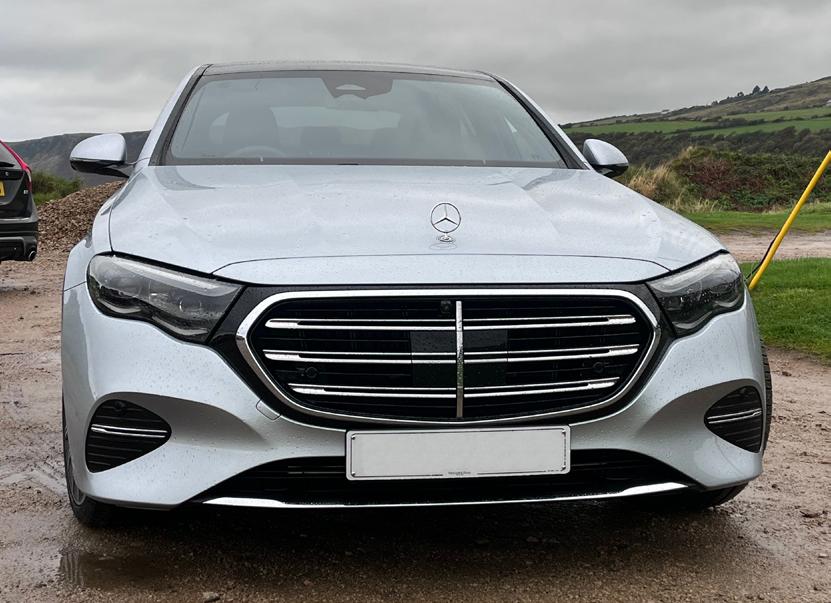
The quality of materials used inside is generally high, with soft-touch surfaces and a sleek, minimalist design. That said, a few plastic elements around the steering wheel stalks detract slightly from the overall luxury feel, but they don’t diminish the high-tech, premium vibe that defines the cabin.

The A180d comes equipped with a 1.5-liter diesel engine producing 109 bhp and 260 Nm of torque. It isn’t a powerhouse by any means, with a 0-62 mph time of 11.3 seconds, but it’s adequate for most daily driving scenarios. This engine excels in fuel efficiency, offering up to 79 mpg in extra-urban settings, making it a great choice for those who cover a lot of ground on the motorway.
Where the A180d might disappoint enthusiasts is in its driving dynamics. The AMG Line may suggest a sportier edge, but the car doesn’t quite deliver in this regard. The steering, while precise, lacks the feedback you’d expect from a sport-focused model, and the torsion beam suspension (as opposed to the multi-link setup in higher-end models like the A200) results in a slightly firmer, less composed ride over uneven surfaces. However, the car excels in cruising at high speeds, with low wind noise and a comfortable driving experience on highways.
Despite its modest power, the car holds its own on long trips. The seven-speed dual-clutch automatic transmission is well-matched to the engine, delivering smooth shifts and making the most of the available torque.

Mercedes has ensured that the A180d AMG Line comes with a suite of modern safety technologies. Active Lane Keeping Assist and Speed Limit Assist come standard, along with other advanced driver-assistance systems. These features work well, although some drivers may find the lane-keeping system a bit overactive at times, correcting the course too aggressively.
In terms of passive safety, the A-Class has been awarded a five-star Euro NCAP rating, thanks to strong protection for adult occupants (93%) and children (81%), alongside a decent score for pedestrian safety (67%).
One area where the A180d AMG Line does shine is fuel economy. Its diesel engine offers a compelling option for those who prioritize lower running costs, especially on long-distance journeys. With a fuel tank capacity of 50 litres and CO2 emissions as low as 102g/km, it’s also an attractive option for company car buyers looking to minimize tax liabilities.
The cabin provides ample room for front passengers, though space in the rear feels a bit cramped due to the large, bolstered front seats that are standard with the AMG Line. The boot capacity is 370 Liters—sufficient but not class-leading—so if practicality is a top concern, rivals like the Audi A3 or BMW 1 Series might offer slightly more in this department.
The Mercedes A180d AMG Line is a well-rounded compact luxury car, albeit with a few compromises. Its strengths lie in its striking design, top-notch interior, and impressive fuel economy. It’s a sensible choice for drivers who prioritize luxury and economy over outright performance.
However, if you’re after a car that thrills on twisty roads, this particular variant might leave you wanting. While its AMG styling and badging suggest sportiness, the driving dynamics don’t quite match up, making it a more sedate and comfortable cruiser than a back-road blaster.
In the end, the A180d AMG Line excels in the areas that matter most to its target audience: style, tech, and efficiency. Its limitations in performance may not deter buyers who are more concerned with image and comfort than outright driving excitement, but it does mean that it’s not the best option for those seeking a genuinely engaging driving experience.
For a starting price around £28,000, this diesel Mercedes offers a premium badge with relatively low running costs, making it a tempting proposition for those in the market for an entrylevel luxury hatchback. However, there are more dynamic options out there for buyers prioritizing driving engagement over badge prestige.

By Daemon Sands
In 2024, BMW Group remains steadfast in its drive to lead the future of premium automotive experiences through innovation, electrification, and sustainability. From its origins over a century ago, BMW has evolved into a global powerhouse, setting new benchmarks in eco-conscious luxury and advanced technology. This year, the company’s growth is evident not only in its financial performance but in its strategic shift towards a fully electric fleet, significant carbon reduction initiatives, and a holistic focus on employee wellbeing. With CEO Oliver Zipse’s guidance, BMW is creating a vision of the future that aligns top-tier automotive design with sustainable, responsible practices.
BMW’s commitment to sustainable growth shines across every facet of its business, from high-tech production facilities to groundbreaking vehicle technology and comprehensive employee benefits. As BMW embraces electric mobility and green energy practices, its future-driven ethos remains rooted in crafting experiences that marry luxury with environmental responsibility.
BMW Group’s story is rooted in over a century of innovation, evolving from a small aircraft engine manufacturer in 1916 to a global leader in premium automotive design and sustainable mobility. In 2024, BMW Group is not only steering its brands, BMW, MINI, Rolls-Royce, and Motorrad, toward



cutting-edge advancements but also focusing on a transformative shift toward electric and sustainable technologies.
BMW Group’s performance has remained robust, with a 2024 annual turnover forecasted around €155.8 billion, sustained by a growing demand for premium vehicles and a solid financial strategy. During the first half of 2024, BMW achieved an EBT margin of 10.9% and an EBIT margin of 8.6% in its automotive segment, driven by a surge in fully electric vehicles (BEVs) and premium models, a trend that aligns with BMW’s strategic focus on electrification and profitability targets
CEO Oliver Zipse commended this momentum, emphasizing the “resilience and agility” of BMW in navigating global challenges while adhering to high profitability standards. He noted that BMW’s steady growth is a direct result of its innovationcentric strategy and flexible operational structure, essential for adapting to both market shifts and sustainability goals
One of BMW’s major growth areas is electrification. In the first half of 2024, BMW delivered over 179,500 BEVs, marking a 34% increase from 2023. This leap underscores BMW’s commitment to becoming a leading force in electric mobility, aiming to cover 90% of its market segments with BEVs by 2025. The upcoming “Neue Klasse” models are expected to play a pivotal role in this strategy. These models are designed with next-generation technology, integrating advanced AI, digitalization, and lightweight construction to enhance both performance and energy efficiency
BMW has invested in its facilities to support this electrification push, outfitting them with AIdriven quality control and predictive maintenance systems. This commitment to technological innovation doesn’t stop at production; it extends to the vehicles themselves. BMW’s latest models are equipped with state-of-the-art connectivity, advanced driver-assistance systems, and software that can be updated remotely, keeping vehicles at the forefront of safety and performance long after purchase.

Sustainability is a core pillar of BMW’s business model. BMW Group has set ambitious targets to reduce carbon emissions throughout its production processes, including its supply chain. By 2030, the company aims to reduce CO₂ emissions per vehicle by at least 40% across its entire lifecycle. Facilities like the BMW plant in Leipzig are leading examples, running on green energy and incorporating recyclable materials into vehicle production.
BMW’s commitment to sustainability has been further recognized by certifications such as LEED and WiredScore’s Global Smart Neighborhood Certification, underscoring BMW’s role as an environmentally conscious automaker. Zipse highlighted this in a recent statement: “Our focus is not only on reducing emissions in our products but also throughout our entire value chain, because this is what future-oriented, sustainable luxury looks like.”
In 2024, BMW Group continued to emphasize employee well-being, offering a range of benefits from flexible working arrangements to an employee vehicle program, health management, and professional development. With approximately 155,000 employees worldwide, BMW fosters a culture where work-life balance is prioritized through options like home-office flexibility, nonworking shifts, and paid holidays. Additionally, employees can access BMW’s robust health programs, which include stress management and preventative care, to maintain a high level of well-being
BMW’s profit-sharing model also provides financial incentives to employees, reflecting the company’s commitment to sharing its success with its workforce. Zipse has often highlighted the role of BMW employees in driving the brand’s achievements, stating, “Our people are the backbone of our progress. Their expertise, creativity, and commitment are integral to our sustainable growth.”
BMW’s recent investments in facilities are not only aimed at expanding EV production but also at enhancing sustainability and technological integration across its plants. These facilities feature advanced automation and are designed to be flexible to accommodate future production needs. By integrating renewable energy and energy-efficient practices, BMW’s facilities set benchmarks for sustainable manufacturing. The group’s flagship Leipzig plant, for instance, operates largely on wind power and is part of BMW’s broader initiative to achieve a carbonneutral production network by 2025
With its ongoing commitment to electrification, sustainability, and employee welfare, BMW is poised to lead the automotive industry into a new era of luxury that prioritizes innovation and environmental responsibility. As Zipse succinctly put it, “The future of BMW is more than just high performance, it’s about sustainable excellence at every level.”








By Cassidy Banks
Founded in 1978, the Spanish Wine Federation (FEV) represents over 800 wineries, championing the economic, social, and environmental sustainability of Spain’s iconic wine industry. With a $22 billion valuation and a global footprint, the sector is now facing critical challenges, climate change, economic pressures, and regulatory constraints. Under the leadership of new president

Pedro Ferrer, the FEV is steering the industry through transformative changes in 2024.
Since its establishment in 1978, the Spanish Wine Federation (FEV) has served as the primary voice for Spain’s wine industry, representing

both large and small wineries in national and international arenas. With over 800 member wineries, the FEV is committed to fostering a competitive and sustainable environment for Spanish wine through strategic lobbying, market research, and the promotion of wine as a fundamental part of the Mediterranean lifestyle. A strong advocate for policy reform, the Federation plays an instrumental role in defending the economic and cultural legitimacy of the wine sector amid evolving regulatory landscapes and consumer expectations.

In recent years, the FEV has pushed for broader recognition of wine’s cultural and dietary significance, actively participating in policy decisions impacting the industry’s growth and environmental adaptation. This advocacy extends internationally through collaborations with the European Committee of Wine Companies (CEEV), allowing the FEV to influence policy in the European Union and beyond.
Valued at approximately $22 billion, Spain’s wine industry is one of the nation’s largest agricultural sectors, contributing around 2% to the country’s GDP. Over 363,000 jobs are tied to wine production, including 201,000 directly involved in viticulture and winemaking, highlighting the industry’s role in supporting both rural employment and economic stability
Spain is the world’s second-largest wine exporter by volume, producing over 40 million hectoliters annually. Much of this production is exported to European countries, the U.S., Canada, and, increasingly, Asian markets. However, despite its export volume, Spanish wine generally earns lower prices compared to Italian and French wines, largely due to the high proportion of bulk wine exports, which represent over half the volume but only 17% of the export value. To address this disparity, Spanish producers are increasingly shifting toward higher-value wines, focusing on organic and sustainably produced varieties that appeal to international consumers seeking quality and environmental accountability.
This year marks a pivotal period for the FEV, as Pedro Ferrer, co-CEO of Freixenet Group, takes the helm as president. Ferrer, known for his dedication to rural communities and Spain’s cultural heritage, has made it clear that viticulture is not only an economic driver but also a safeguard against the risks of rural depopulation. “Wine production is essential to our country’s social fabric and cultural identity,” Ferrer stated at his inauguration, urging policymakers to recognize the unique value of wine beyond its market price.

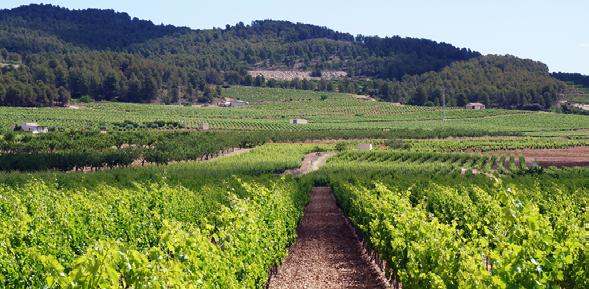
A quality wine is a wine that starts from the vinegrower’s labour and his care to the vines, continues with the oenologist and his winemaking techniques and ends up in the hands of the consumer after a diligent work of marketing.

Ferrer is advocating for balanced policy discussions, calling for moderation not just in wine consumption but also in the regulatory and political discourse surrounding it. This stance reflects the FEV’s dedication to promoting responsible wine consumption through its “Wine in Moderation” program, which emphasizes wine’s role in Spanish society and encourages responsible drinking habits.
With climate change posing significant threats to Spain’s wine-producing regions, the FEV has prioritized environmental resilience and sustainable practices. Rising temperatures and changing rainfall patterns, especially in regions like Catalonia, have forced the industry to adapt quickly to maintain vineyard viability. In response, the FEV has revised its “Action Plan Against Climate Change,” set to launch later this year. This initiative aims to expand scientific knowledge on vineyard management, promoting practices that enhance drought resistance, soil health, and biodiversity
In addition, the FEV’s “Wineries for Climate Protection” certification, updated in 2024, includes new criteria for environmental, social, and governance standards. This certification has already been adopted by major wineries like Freixenet, which are making substantial efforts to reduce carbon emissions and transition to renewable energy sources. Through these sustainable approaches, Spanish wineries are working to protect their vineyards and meet growing consumer demand for eco-friendly products.
Beyond environmental concerns, the Spanish wine industry faces a myriad of other challenges, from labour shortages to fluctuating export policies. Traditional grapegrowing practices are being challenged by rising temperatures and changing weather patterns, while rural depopulation leaves fewer labourers for seasonal vineyard work. Furthermore, regulatory pressures from the Spanish government and EU push for sustainable practices, requiring smaller wineries to invest in organic and biodynamic farming, a costly adjustment for many.
Spain’s wine producers are responding with innovative solutions like drought-resistant grape varieties, water-saving irrigation technology, and precision viticulture that uses data to optimize resource management. To alleviate financial pressure, the government has introduced grants and subsidies for sustainable practices, supporting the industry’s commitment to reducing its environmental impact. These changes are essential to attract younger, eco-conscious consumers, a demographic increasingly concerned with health and sustainability. New product lines, such as lower-alcohol and non-alcoholic wines, are also emerging to appeal to this market
As Spain’s wine industry moves into the future, the FEV’s leadership and initiatives are shaping a sector that balances tradition with modern demands. By prioritizing sustainability, climate resilience, and responsible consumption, the FEV ensures that Spain’s wine remains competitive in a rapidly evolving global market. Under Ferrer’s guidance, the Federation is poised to drive the industry forward, not only safeguarding Spain’s cultural heritage but also solidifying its role as a global leader in high-quality, sustainable wine production.
In an industry rooted in centuries-old practices yet constantly adapting to new challenges, the Spanish Wine
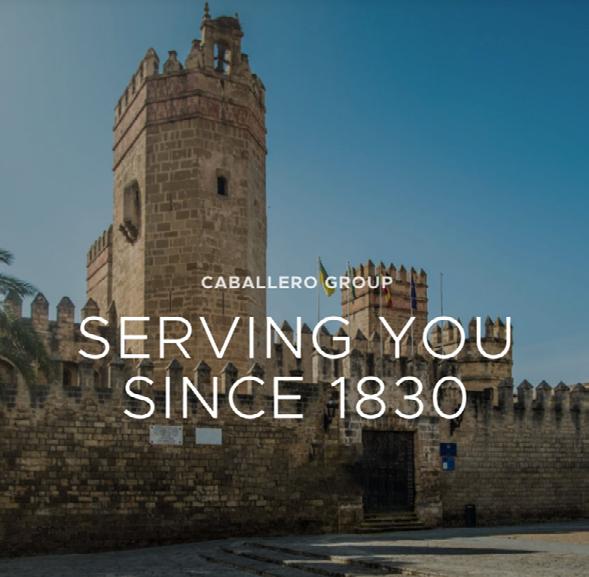

Federation’s advocacy, strategic foresight, and commitment to innovation underscore its vital role. As Ferrer succinctly put it, “Wine is more than an economic asset—it is a symbol of our cultural identity, deserving of policies that protect both its production and the communities that sustain it.” Through ongoing initiatives and partnerships, the FEV is ensuring that Spanish wine continues to thrive, preserving its legacy while preparing for a sustainable and resilient future.
By Cassandra Persephone

In an increasingly diverse world, dietary choices and requirements are fast becoming the one aspect of flying that is leaving a bad taste in the mouth of many business travellers, but what is the answer?
A South African, a Frenchman and a vegan walk into a conference room. No, it’s not the start of a teeth-suckingly un-PC joke, but a real life visual that really demonstrates how far things have come in the business world, except for one thing; the vegan can’t eat anything in the lunch buffet. Eyes roll, halfhearted offers to “run out and grab a tub of humus” are whispered and it all results in a withered defeat from the vegan. I’m that vegan and I will go hungry, again. Or perhaps I’ll make good use of the two apples that nobody else is interested in, after they’ve enjoyed a plethora of smoked salmon and cream cheese mini bagel bites.
I’m not angry. I’m not even disappointed, but I am a little confused. In my mind, being vegan is, thankfully, becoming a lot more mainstream, so it always shocks me when the best on offer is a sad jacket potato with no butter or a cheese-less pizza in a restaurant. I’m my own worst enemy in meetings though, as instead of insisting I find something to eat, I’d rather get on with the confab and address what we are there for, so in between important discussions about reach and engagement, my stomach chimes in with a supportive gurgle or a dismissive groan. What does get my goat, however, is the lack of diversity in airplane food.
First off, let’s address the fact that every airline does have to offer a meal that vegans can eat on
a long-haul flight, but I am yet to find the piece of legislation that states that it has to be a curry. Hey, I like a curry, I really do, but be honest; would you fancy an unknown curry when you’re 30,000 feet up in the air with two bathrooms being shared between a few hundred people? No, I didn’t think so. Plus, there’s never any real flavour to the meal itself, as the airlines don’t want to risk making something too spicy, so it’s a never-ending joy to once again be served with a my-first curry in a flaccid plastic tub.
How about getting down to some even worse issues? I think
it would be conservative if I estimated that at least 50% of airlines seem to assume that being vegetarian and vegan is exactly the same thing. It’s an easy mistake to make, I’m sure, but there really isn’t anything more demoralising than opening up your food, expecting a waft of generic curry aroma to hit you in the face like a cold and soggy towel, only to see an omelette jiggling back up at you. Oh, hang on, there IS something worse than that: having to call the steward over.
I don’t know if you’ve ever had to make a complaint about the food you’ve been served on a flight but
let me tell you just how arduous it is. You’re looking awkward as hell, pinned into your seat, when a smiling fountain-of-youth wafts down the aisle to see how they can help. They spot your untouched food and the smile disappears. You explain the problem. They don’t understand. You explain again and they suck the last morsels of fresh oxygen out of the cabin and in through their teeth before explaining that there are no more meals and that you should have specified a more specialist option. Cue one email print-out confirming that you did, a suspicious appraisal of your entire being and some very haphazard rustling ‘in the back’ for some peanuts and crisps. I’d love to say this has only happened to me once, but that would be a lie. The only thing that changes every time is the uniform of the weary steward trying to “deal with me”.
So, what’s the solution? Naturally, better variety for vegans choosing to travel by air would be
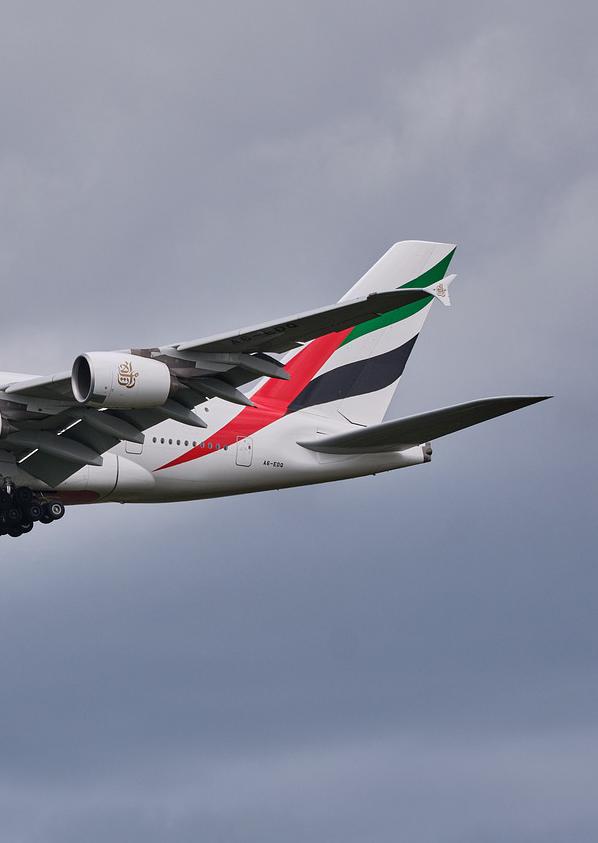
fantastic. We don’t expect miracles, but the odd falafel instead of curry would be great. Maybe even a three-bean chilli. These aren’t expensive meals, and they travel well, so perhaps if we all put on our pleading eyes, we can get somewhere with a menu improvement initiative, but if not, I have a commonsense solution for you.
Obviously, I feel akin to ANYBODY that struggles with airline food, not just vegans. I know people with Crohn’s, Coeliac disease, peanut allergies and all sorts of other hard to manage conditions that lead to unwanted in-flight hassles and to all of them I say the same thing: take your own food. It might not be the glamorous option and it’s a really bitter pill to swallow that your flight incorporates the cost of a nutritious meal that you won’t eat, but in
every life a little rain must fall and if, like me, you are usually travelling for business, you really don’t have time for bickering with BA, Virgin or any other airlines’ finest.
If you’ve ever watched Hannibal, you might recall one of the final scenes, where Lecter is escaping on a plane and cannot bring himself to eat the food provided. Instead, he pulls out a very stylish lunchbox that is filled to the gills with luxurious, decadent and…how shall I put this…exotic delicacies. Of course, I’m not packing pieces of broiled brains in my pack-up, but I do enjoy a better selection of slow-release energy snacks and properly seasoned treats that I prepared myself. And don’t go thinking that I’m undermining my image as a professional as I do so, because I pack a stylish stainless steel Rover Planet Box that is easy to pop through the x-ray machines and fits into my carryon bag without an issue. No, I’m not endorsed, I actually do own and heartily recommend this receptacle!
You know what? I think I’ve just realised that the answer to my lunch-meeting woes is to do exactly the same thing. As much as I’d like to believe that more people will start to ask if there are any special dietary requirements to cater for, there’s probably as much chance of me looking out of my windowadjacent plane seat and seeing a flying pig floating past, enjoying a mild curry as it goes. I’ll tell you one thing though; I’m more than happy to be proved wrong if any airlines would like to step up to the (vegan) plate and show me something a little more adventurous…
By Staff Contributor
With nearly a century of service, Delta Air Lines sets new standards in 2024 through premium travel experiences, sustainable initiatives, and a strong employee-centric culture. From enhanced lounge spaces and fast, free Wi-Fi to a commitment to sustainable aviation fuel, Delta distinguishes itself as a leader in eco-friendly travel and customer satisfaction worldwide.
Founded by Collett E. Woolman in 1925 as a cropdusting service in Macon, Georgia, Delta Air Lines has evolved into one of the world’s largest and most recognized airlines. With over 100,000 employees and an extensive global network, Delta connects travellers to more than 300 destinations across 50+ countries. From major U.S. hubs like Atlanta, New York-JFK, and Los Angeles to international airports including London Heathrow, Tokyo Narita, and Sydney, Delta’s reach is unparalleled in North American aviation
In 2024, Delta continued setting itself apart from competitors with a heightened focus on premium service, customer experience, and sustainability. Delta’s recent lounge upgrades at JFK and LAX airports illustrate its commitment to creating a luxurious travel experience, offering fine dining, wellness amenities, and Delta Sync—providing fast, complimentary Wi-Fi across 690 aircraft. Unlike many U.S. carriers, Delta’s expanding fleet of modern aircraft includes models like the A350900 and A321neo, which enhance fuel efficiency and reduce environmental impact
Sustainability remains a core focus, and Delta’s ongoing investment in Sustainable Aviation Fuel (SAF) initiatives highlights its environmental commitment. In collaboration with Flint Hills Resources, Delta is building a 30-million-gallon SAF facility in Minneapolis. The airline’s efforts have resulted in over 16 million gallons of fuel savings this year, part of its pledge to reduce emissions and set industryleading sustainability standards

Delta also caters to diverse dietary preferences, including vegan options, on both domestic and international flights. Recognizing the growing demand for plant-based meals, Delta has expanded its menu to include vegan and other specialized meals, which can be pre-ordered to accommodate dietary needs.

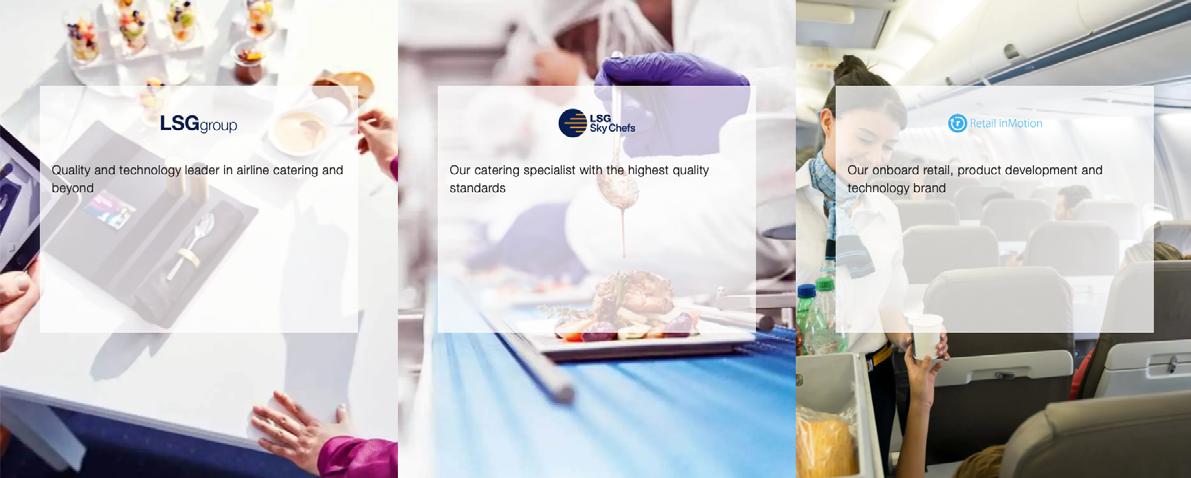

“A good airline meets the diverse dietary needs of their passengers, not the other way around,”
While on the subject of little but important details, Bastian emphasizes the role of Delta’s workforce in maintaining its reputation for excellence, remarking,
CEO Ed Bastian explains, “We
believe that airlines can go a long way just by being more accommodating to different tastes to make our passengers more comfortable.”
Indeed, he goes on to elaborate that with so many options for flying today the small details, such as what sort of inflight meals are served, how is entertainment handled and whether the employees are bilingual make big differences in the booking habits of today’s studious travellers.
“Our people are the driving force behind Delta’s operational and customer service excellence.”
By investing in employee development, with programs like Propel for aspiring pilots and comprehensive benefits including a 5% base pay increase in 2024, Delta builds loyalty internally and delivers high standards externally.
This blend of customer-centric amenities, environmental accountability, and employeefocused culture is where Delta truly differentiates itself from competitors, creating a travel experience that’s premium, sustainable, and inclusive. As the airline nears a century of service, its 2024 developments underscore a commitment

to shaping the future of air travel with a global, environmentally conscious approach.
The airline implemented a 5% base pay increase for its 100,000-strong workforce and sustained its profit-sharing program, rewarding employees for their contributions. Beyond its workforce, Delta’s social initiatives span global communities. It has strengthened partnerships with nonprofits like the Prince’s Trust in the UK and Breast Care International in Ghana, reflecting its corporate commitment to social responsibility alongside operational growth
Already this year, Delta Air Lines has made significant strides in enhancing its global operations, customer experience, and commitment to sustainability. Expanding its transatlantic footprint, Delta has launched its largest-ever European route schedule, introducing seasonal flights from New York (JFK) to Munich, Naples, and Shannon, and from Atlanta to Zurich. This growth is part of Delta’s joint venture with Air France, KLM, and Virgin Atlantic, aimed at strengthening its position in the competitive transatlantic market, offering travellers seamless
options with 159 daily flights to 33 destinations across Europe. To further appeal to international passengers, Delta has opened new Delta One lounges in JFK and LAX, equipped with high-end amenities such as dining and wellness options, aligning with Delta’s premium service focus.
Sustainability is a central pillar in Delta’s 2024 developments. The airline recently added 20 new Airbus A350-1000s to its fleet, which are 20% more fuel-efficient than previous models, supporting Delta’s goal of achieving net-zero emissions by 2050. Delta’s Sustainable Skies Lab, a dedicated innovation hub, is working with partners on sustainable aviation fuel (SAF) and eco-friendly initiatives like reducing single-use plastics and testing energy-saving in-flight operations. This lab is part of Delta’s comprehensive plan to reduce its carbon footprint while setting industry benchmarks for sustainable air travel
Customer experience remains at the forefront, with Delta introducing fleet-wide cabin enhancements, including ergonomic seating, ambient lighting,

and upgraded amenities that contribute to a restful journey for travellers. Free, high-speed Wi-Fi for SkyMiles members is now available on most domestic flights, providing passengers with convenient, uninterrupted connectivity. The new
cabin interiors also feature unique design elements inspired by Delta’s global reach, and the airline continues to offer a wide selection of in-flight entertainment and food options, including vegan choices, on its expanding network of flights
Through these strategic expansions, environmental initiatives, and employee-focused measures, Delta is setting itself apart as an airline that not only connects destinations but also invests in sustainable, customercentred travel. As Bastian has remarked, Delta aims to “innovate for a sustainable future,” building on nearly a century of operations to become a leader in eco-friendly, premium air travel experiences.


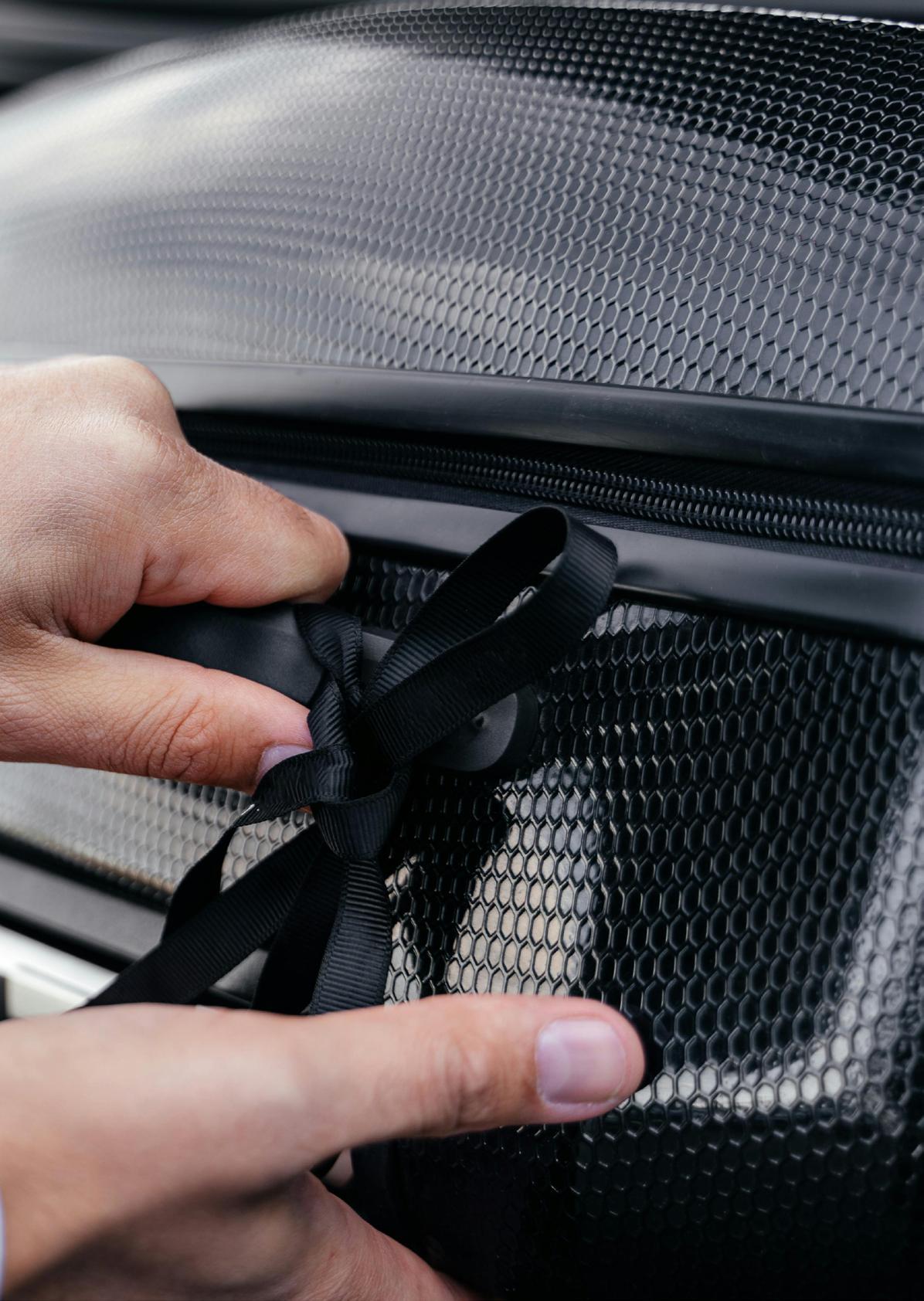


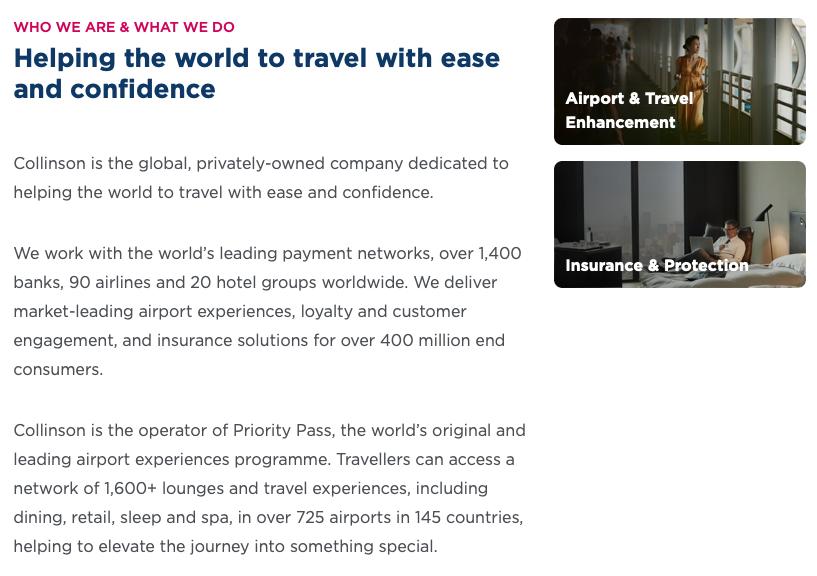

By Don Campbell
As frequent travellers navigate the ever-changing landscape of airports, many find value in retreating to an oasis of calm: the airport lounge. Priority Pass, a leading provider of airport lounge access, advocates for these spaces as essential to enhancing the overall travel experience. The benefits of using airport lounges, particularly for regular travellers, extend far beyond comfort. In this article, we will explore why frequent flyers should leverage airport lounges, drawing on insights from Priority Pass and other sources to offer a comprehensive view.
For regular travellers, airport lounges provide a sanctuary from the chaotic atmosphere of busy terminals. According to Priority Pass, lounges offer a “quiet space to relax or catch up on work” away from crowded seating areas, noisy announcements, and long lines. The value of this seclusion becomes particularly clear during long layovers or flight delays when public waiting areas can become overwhelming. By providing a more peaceful environment, lounges help travellers maintain a sense of calm, which can make the entire journey less stressful.
For business travellers, airport lounges serve as a crucial workspace. Priority Pass highlights that its lounges are equipped with “Wi-Fi, charging stations, and desks,” enabling travellers to stay productive even while in transit. These amenities allow frequent flyers to keep up with emails, attend virtual meetings, or prepare for presentations without the distractions often found in public areas. Lounges can thus transform travel downtime into an opportunity to stay ahead of work commitments, making it an indispensable resource for professionals.
Moreover, lounges often come with business facilities like printers, private meeting rooms, and quiet zones, making them ideal for remote workers or entrepreneurs who need a conducive space for important tasks. As the world becomes more connected, the ability to work on the go is increasingly crucial. Priority Pass states that
“whether traveling for business or pleasure, lounges can turn waiting time into a productive opportunity.”
One of the primary reasons regular travellers make use of airport lounges is the heightened level of comfort they offer. Standard airport seating and facilities are often not designed with extended stays in mind. Lounges, on the other hand, typically provide plush chairs, more personal space, and access to showers in certain locations, allowing travellers to refresh and recharge between flights. Priority Pass emphasizes that “lounges provide a more relaxing environment, with comfortable seating and space to stretch out.”
Lounges also often offer complimentary drinks, snacks, and sometimes even full meals. This is particularly beneficial for travellers facing long journeys or layovers, as they can avoid the inflated prices of airport restaurants and enjoy higherquality food. A Priority Pass member might say, “Instead of paying for a mediocre meal, I get access to fresh food and drinks, which makes my time at the airport much more enjoyable.”
Travel expenses can quickly add up, especially for frequent flyers. Food, drinks, Wi-Fi access, and
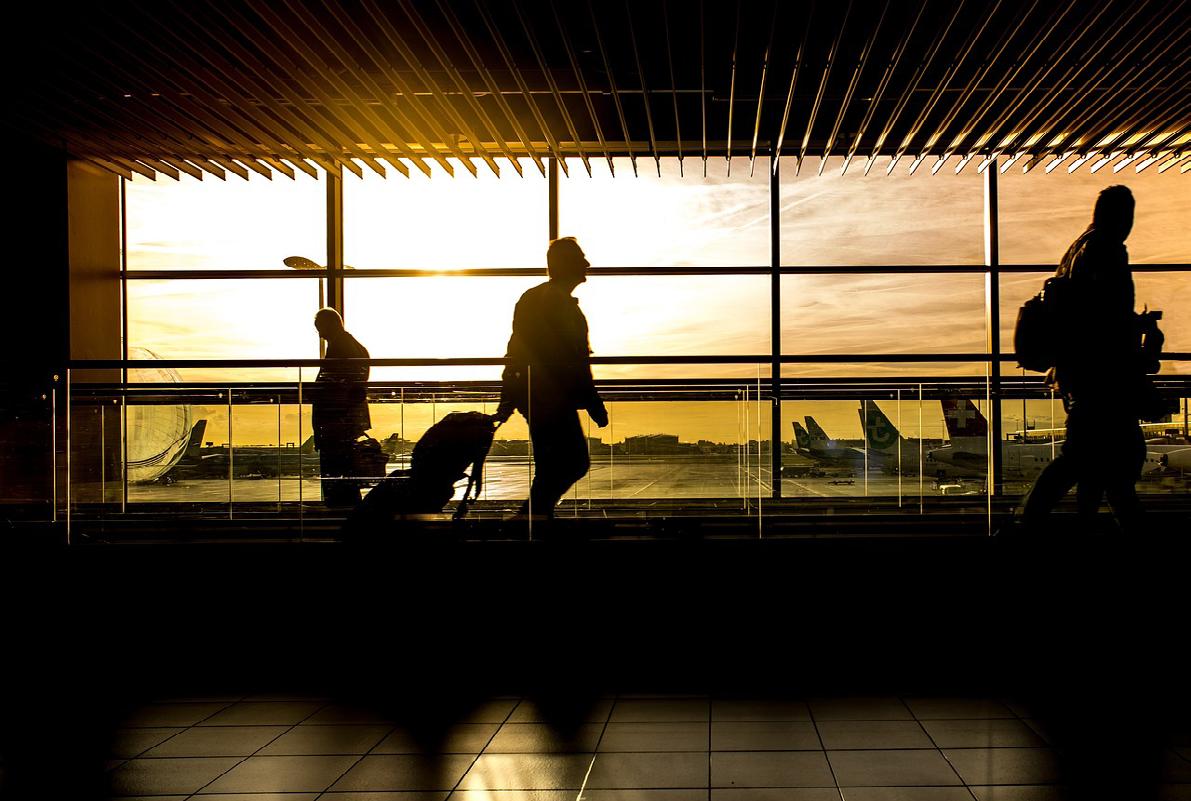
even comfortable seating often come with premium price tags in airports. Priority Pass underscores the financial advantages of lounge access by stating, “With access to lounges, you can save on food, drinks, and Wi-Fi, which are often charged at high rates in airports.”
In fact, for travellers who fly regularly, lounge access can offset the cost of a Priority Pass membership. The savings from complimentary refreshments, free Wi-Fi, and other services can easily surpass the membership fee, particularly for those who travel frequently.
Priority Pass lounges are available at over 1,300 airports worldwide, offering a consistent level of service that can greatly improve the overall travel experience. As they often feature local elements such as cuisine or artwork, travellers can get a taste of the region they are visiting, adding a cultural touch to their time in transit.
Regular access to lounges can also provide an emotional boost. The predictability of having a calm, comfortable place to wait can ease the mental
strain associated with flying. Priority Pass notes, “Knowing you have a quiet space to retreat to can alleviate the stress of flying, especially during busy holiday seasons or peak travel times.”
Priority Pass offers various membership levels tailored to different types of travellers, ensuring that both occasional and frequent flyers can enjoy the benefits of lounge access. Their membership packages range from “Standard,” which provides pay-per-visit access, to “Prestige,” which offers unlimited access to lounges worldwide. This flexibility means that travellers can choose the option that best suits their travel frequency and budget.
For travellers who fly often, the “Prestige” membership can be particularly cost-effective, as it grants unlimited lounge access at no additional cost per visit. This eliminates the need to weigh the decision of whether to pay for lounge entry each time. As Priority Pass mentions, “Prestige members can enjoy the luxury of lounges without worrying about additional fees, making it ideal for frequent flyers.”
In a post-pandemic world, many travellers prioritize safety and hygiene when making travel decisions. Priority Pass lounges have adapted to these concerns by implementing enhanced cleaning protocols and offering contactless services. Travelers can rest assured that the lounges they access maintain a high standard of cleanliness, reducing the risks associated with crowded airport terminals.
Priority Pass has also introduced digital lounge access, allowing members to access lounges using their smartphones without the need for physical cards or interaction with lounge staff. This innovation further streamlines the lounge experience, enhancing convenience while addressing modern health and safety concerns.
Some Priority Pass lounges offer additional perks that enhance the travel experience even further. For example, certain lounges include spa services, where travellers can enjoy a relaxing massage before or between flights. Others may feature nap rooms, private suites, or access to fitness centres. These extras can transform a long layover into a rejuvenating experience, helping travellers arrive at their destination feeling refreshed.
Priority Pass emphasizes that lounges are “much more than just a place to sit; they are designed to enhance the travel experience, whether through relaxation, work, or entertainment.”
For frequent travellers who spend significant amounts of time in airports, these additional perks can make a world of difference. They not only help pass the time but also contribute to overall well-being during the journey.
For regular travellers, airport lounges offer far more than just a comfortable chair and a cup
of coffee. As highlighted by Priority Pass, lounges provide essential amenities like Wi-Fi, charging stations, and refreshments, enabling travellers to stay productive and relaxed during their time in transit. The convenience, comfort, and potential cost savings make lounge access a smart investment for frequent flyers, especially those who value efficiency and a stress-free travel experience.
With global coverage and various membership options, Priority Pass makes lounge access accessible to travellers of all types. Whether you’re a business traveller looking to stay productive or a leisure traveller seeking a peaceful refuge, airport lounges can enhance your overall travel experience in ways that are hard to replicate elsewhere. As Priority Pass puts it,
“Your time at the airport is valuable, and lounges ensure you make the most of it.”




By Donnie Rust
There is a Buddhist saying, “Better not to start, once begun, better to finish”, and it relates to how enlightenment or the pursuit of truth will almost always lead you somewhere you feel unprepared to go. However, by going back, you will always be plagued by the unknown. So, if you’re foolish enough to start something, it is always best to see it through to the end. I think that airport cleanliness may be the exception, so, read on at your peril.
When it comes to airport cleanliness, certain airports have earned a notorious reputation for being less than ideal. According to various surveys and passenger reviews, some of the filthiest airports include major hubs like London Gatwick Airport, Manchester Airport and Heathrow which has faced consistent complaints about outdated facilities and lack of cleanliness, especially in hightraffic areas like security checks and restrooms.
A study published in BMC Infectious Diseases identified that TSA security bins are particularly dirty, often harbouring viruses even more than restrooms. This aligns with the common traveller experience of feeling that airport sanitation, particularly in public spaces, leaves much to be desired.
If there is public hand sanitizer available, if it is in a convenient place and if it has been refilled, many passengers will clean their hands, but many don’t. Additionally, of those who clean their hands how many would consider cleaning their devices, which act as petri dishes for anything we’ve handled or touched throughout the day. Think about it, when was the last time you wiped your phone down with an antibacterial wipe and this is when you’re probably already aware that cell phones carry ten times more bacteria than toilet seats!
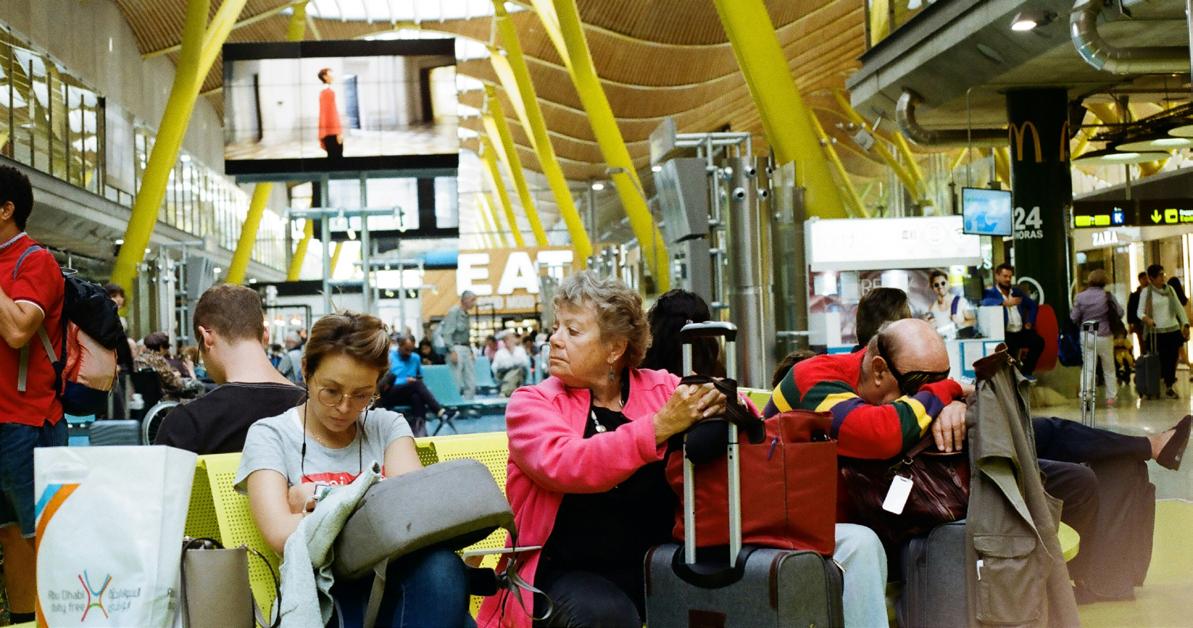
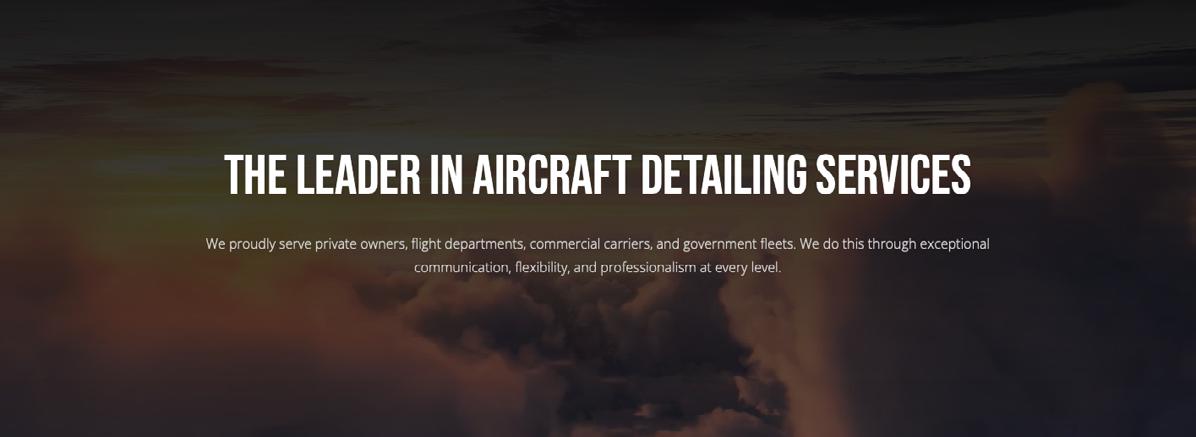


TSA bins, which every passenger uses to get through security, are filled with thousands of these devices and handled by thousands of unwashed hands between cleanings. And with the amount of traffic coming in through airports every day it is impossible for these bins to be cleaned more regularly without disrupting the flow of transport. In most British airports During Covid, the bins were cleaned up to three times a day, but this was only because air travel ground to a trickle, but with UK airports dealing with over 200 million passengers a year cleaning is not as much a priority as punctual departure.
Now, as far as TSA bins are concerned airports are looking at solutions ranging from automatic disinfectant sprays to sterilising UV light treatment, however the bins are only one problem. A modern airport offers millions of touch points, including buttons, handles (both for trolleys and passenger luggage), flat surfaces such as touch screens, tables and counters, seating, plates and toilet doors.
Cleaning the vast, high-traffic environment of an airport is a complex challenge that requires professional expertise. One of the companies leading the charge in maintaining airport hygiene is Pritchard Industries, which provides specialized janitorial services tailored for airports. Erin Meehan who took on the role as Chief Executive Officer in 2023 and has over two decades of facility management experience, says that the airport cleanliness is always determined by their clients and not by the passengers. He elaborates that airports always want the best level of cleaning for their facilities, and that as a company they provide everything from general cleaning and disinfecting to power washing and waste management. They also go even further by maintaining hygienic and attractive airport spaces, ensuring that every surface, from restrooms to high-touch areas like security and check-in counters, are thoroughly cleaned.
“However, we can’t do anything about passenger behaviour,” he adds, “Especially when a large portion of airport users don’t have the energy after a long flight to remember to properly wash their hands, clean their devices or cover their mouths when they cough or sneeze. It is human to be neglectful when we are tired, it is a problem but it’s also why companies like ours exist.”
It is pretty obvious which airports would be the hardest to clean. Cleaning to the level that is needed requires downtime which the busiest international airports do not have. On the flipside though, bigger, and busier airports are held to a higher standard not only by commissions but by a higher number of passengers travelling and so more effort will be applied. Heathrow Airport, with almost 80 million passengers a year, including businesspeople and holiday makers, is cleaned every day in incremental stages. However, an airport such as Norwich Airport, which handles flights to and from by offshore workers, requires less cleaning to reach the same level.

Cleaning methods are largely universal, companies can create stronger and stronger chemicals and fancier and fancier machinery, but cleaning is still cleaning. Even the new UV treatment for sterilising items, will not work one hundred percent because many specialists in the field believe it is down to passenger behaviour. If that is the case, the cleanliness of airports is unlikely to improve until passengers become more aware of the risks. But there is a big other side to this too.
Does it even matter? There is certainly an acceptable base-line standard of sanitised neatness that is required for an airport on a purely aesthetic level. But is the “that’ll do” standard enough? According to the Civil Aviation Authority, in 2022 following the Covid Pandemic, Heathrow Airport wanted to understand the impact that the virus had on consumer perceptions of cleanliness in their everyday life and when travelling. This was two years ago, and another study has not been conducted, however at the time, around 60% of those involved said that by July 2022 their daily life had returned to normal. They were still aware of their actions and taking precautions but their concerns at the airport were more around crowded and busy terminals.

Two years later, seeing someone wearing a mask and gloves is a rare sight and people have slipped into the same patterns they had prior to Covid, as if it never happened. The airport staff continue to do their best to keep things as clean as possible and passengers (like you and me) do our best to wash our hands when we’re supposed to and mostly hope for the best. Most of us prefer to muscle through if we’re feeling under the weather and will travel on a plane surrounded by people even if we’re coughing and spluttering like an old diesel Ford.
And yet, the world hasn’t plunged into chaos again. I believe that we just want to get on with whatever it is that we’re doing, and that mostly we’re fine with a “that’ll do” standard because it is easily reciprocated. The airport staff wipe down the
surfaces enough times to remove anything crusty before we sit down, and we can avoid scathing our hands in sanitiser and avoiding human interaction.
The world is a filthy place because there are people living in it and, we’re fine with it. Personal responsibility means that we are allowed to settle for a good-enough standard when it is balanced with the advantages and freedom that international travel permits us. Human interaction and travelling is more important than a swabbed surface. So, the best solution? Dose up on your Vitamin C, wash your hands after you go to the toilet and before you eat anything and if you sneeze don’t do it in someone’s face.


By Daemon Sands
For those unfamiliar with the term, “Medical tourism”, involves traveling across international borders to receive medical care and it has been on the rise globally. For residents of the United Kingdom, the trend is growing at an accelerated pace as more and more Brits seek surgical treatments abroad. Whether driven by long NHS waiting lists, the desire for specialized care, or the prospect of cost savings, the decision to go overseas for medical procedures is becoming an attractive option for thousands. The Lost Executive explores the motivations behind the popularity, the countries benefiting from British medical tourists, and the potential risks and rewards involved.
Medical tourism involves patients traveling to another country to access healthcare services, which can include dental work, cosmetic surgery, orthopaedic surgery, and even organ transplants. Historically, the term referred to people from less developed nations seeking advanced healthcare in wealthier countries. However, today, many patients from developed countries like the UK are opting for medical procedures abroad that appear to offer the same- if not higher- levels of treatment for a fraction of the cost.
Dr. A. Smith, a consultant surgeon, explains, “The idea of medical tourism has shifted from being solely about affordability to encompassing better access to specialized care. Many countries now offer highquality services that match or even surpass what’s available domestically, and patients are increasingly recognizing that.”
Recent studies suggest that the number of Brits traveling abroad for surgery has increased by around 15-20% over the last five years. A report by the International Medical Travel Journal (IMTJ)
found that approximately 63,000 UK residents travelled abroad for medical care in 2023 alone. The reasons for this surge vary, however long waiting times in the NHS for non-emergency surgeries such as hip replacements, knee surgeries, and cosmetic procedures have been significant contributors. According to the UK’s National Health Service, the average waiting time for elective surgery is between 18 to 24 months. For many, this delay is untenable and unfair.
A 47-year-old patient, Charlotte Davies, who travelled to Hungary for a hip replacement, shared her experience: “I just couldn’t bear the wait any longer. The pain was constant, and when I found out that I could get the surgery done within a month in Budapest, at half the price, it felt like an obvious choice.”
Several countries have emerged as top destinations for UK medical tourists. The most popular are Turkey, Hungary, Spain, and Poland, each offering competitive pricing and high standards of care.
Turkey – Turkey is arguably the most favoured destination for cosmetic and dental surgeries. Istanbul has developed a reputation for hair transplants, with clinics catering almost exclusively to foreign clientele. For instance, the average cost of a hair transplant in Turkey is around £1,500, compared to £6,000 in the UK. Dr. Emre Kaya, a Turkish cosmetic surgeon, states, “We have seen a huge influx of British patients, especially for procedures like rhinoplasty and hair transplants. Our clinics offer modern techniques and high success rates, all at a fraction of the cost.”
Hungary – Known as the ‘dental capital of Europe,’ Hungary attracts thousands of British patients for dental implants, crowns, and bridges. Dental
treatment in the UK can be prohibitively expensive, with some patients reporting savings of up to 70% when opting for treatment abroad. Hungarian clinics, particularly in cities like Budapest, are known for their cutting-edge technology and English-speaking staff.
Spain – Spain is a popular choice for UK citizens seeking orthopaedic surgery, like hip and knee replacements. Private hospitals in Spain offer advanced care, with no waiting times and comprehensive aftercare, appealing particularly to older patients who need immediate intervention.
accommodation and post-operative care.
British expat and medical tourist, Simon Tucker, who underwent knee surgery in Poland, remarked, “I was looking at either paying a fortune to go private in the UK or waiting two years on the NHS. The Polish clinic had excellent reviews, and even with flights and hotel stays, I saved over £6,000.”
A common concern among medical tourists is the quality of care abroad. While cost savings are attractive, many patients worry about the standards of treatment in foreign clinics. However, countries that cater to international patients are often accredited by international healthcare organizations and subject to strict regulations.

Poland – Poland is becoming a popular destination for bariatric surgery, with procedures like gastric bypass or sleeve gastrectomy costing between £3,000 and £5,000, far below the average UK price of £9,000 to £15,000.
One of the most significant driving forces behind UK citizens opting for surgery abroad is cost. In many cases, treatments can be up to 70% cheaper than in the UK. For those without private health insurance, paying out-of-pocket for surgery in the UK can be financially draining.
For example, a typical hip replacement in the UK might cost around £12,000 to £15,000 in a private hospital. In comparison, the same surgery in India or Eastern Europe can be as low as £5,000, including
The Joint Commission International (JCI) and the International Organization for Standardization (ISO) are two bodies that certify hospitals and clinics for their quality of care. According to Dr. Hannah Reid, a healthcare consultant, “Patients should always look for JCI-accredited facilities when considering treatment abroad. This ensures that the hospital adheres to global standards of care and patient safety.”
In many cases, the quality of care in these countries can be equal to or even surpass that of UK facilities. Surgeons and medical professionals in popular medical tourism destinations often receive their training in Western countries, including the US, UK, and Germany.
However, while medical tourism can offer benefits, it is not without risks. One of the primary concerns is the possibility of complications arising after surgery. Post-operative care is crucial for recovery, and patients who have undergone surgery abroad may find it challenging to access follow-up care once they return home. NHS policy, for example, does not cover complications from procedures done abroad, meaning patients may need to pay for corrective surgery.

Another issue is travel. Depending on the type of surgery, flying soon after a procedure can increase the risk of deep vein thrombosis (DVT) or other complications. The British Medical Journal (BMJ) advises patients to wait for a specific period after surgery before traveling, typically between one to six weeks, depending on the procedure.
Additionally, there is the issue of legal recourse. In the UK, patients have access to regulatory bodies like the General Medical Council (GMC) and the Care Quality Commission (CQC), which ensure that standards are met and allow for compensation in the event of malpractice. When seeking treatment abroad, patients may not have the same protections, and pursuing legal action across borders can be complex and costly.
The increase in UK residents seeking medical treatments abroad is often viewed as a symptom of deeper systemic issues within the NHS. While some argue that medical tourism offers choice and affordability, others believe it highlights the NHS’s failure to meet certain healthcare demands.
One key issue driving this trend is long waiting times, particularly for elective surgeries, “elective” meaning those that are non-emergency and can be scheduled ahead of time. The pressure on the NHS, exacerbated by funding cuts and resource shortages, leaves many patients facing extended delays. Professor Johanna Hanefeld of the London School of Hygiene and Tropical Medicine notes that many UK residents feel “failed by the system” and are “compelled to travel” for more accessible or affordable care abroad. This sentiment is echoed by many in the healthcare field who view medical tourism as an indication that the NHS cannot always provide timely or sufficient care
Moreover, professionals have pointed out that the NHS is not equipped to handle complications arising from surgeries performed overseas. Dr. Neil Lunt, a researcher at the University of York, emphasizes that while patients may save money on initial treatments abroad, follow-up care within the UK for complications often places additional strain on NHS resources. This, he argues, is a direct consequence of patients being let down by domestic healthcare systems and taking risks to bypass long waits

Additionally, many patients feel that the NHS has lost their sense of direction and become a political entity, placing agendas ahead of actual patient care. As one patient, who spoke with The Lost Executive directly said, “Why would I trust a hospital system more interested in pushing marketing and nonscientific agendas than patient treatment?”
On the other hand, some experts argue that the increase in medical tourism is not necessarily a failure of the NHS but a reflection of the globalization of healthcare. According to a study published by the National Institute for Health and Care Research, medical tourism is becoming an unregulated industry, where aggressive marketing and price sensitivity drive patients to seek treatment abroad. This raises questions about the safety and ethical standards in destination countries, as highlighted by UK coroners investigating deaths related to surgeries abroad
Nevertheless, the medical tourism industry is showing no signs of slowing down. A 2024 report by Deloitte estimated that the global medical tourism market could exceed £100 billion by 2025, driven largely by patients from developed nations like the UK seeking affordable and timely healthcare abroad.
Industry experts believe that the increase in medical tourism from the UK will continue, especially as the pressures on the NHS show little sign of abating. According to a study by YouGov, 45% of Brits said they would consider traveling abroad for medical treatment if it meant avoiding long waiting times, and 37% cited lower costs as a motivating factor.
As medical tourism continues to expand, more patients will weigh the benefits of seeking healthcare abroad against the potential risks. With careful planning, research, and consideration of the destination’s quality of care, medical tourism can be a viable option for those who are looking to bypass the hurdles of the UK healthcare system.
In the words of healthcare expert Dr. Michael Davies, “Medical tourism isn’t just about affordability anymore. It’s about choice, accessibility, and receiving care on your own terms.”




